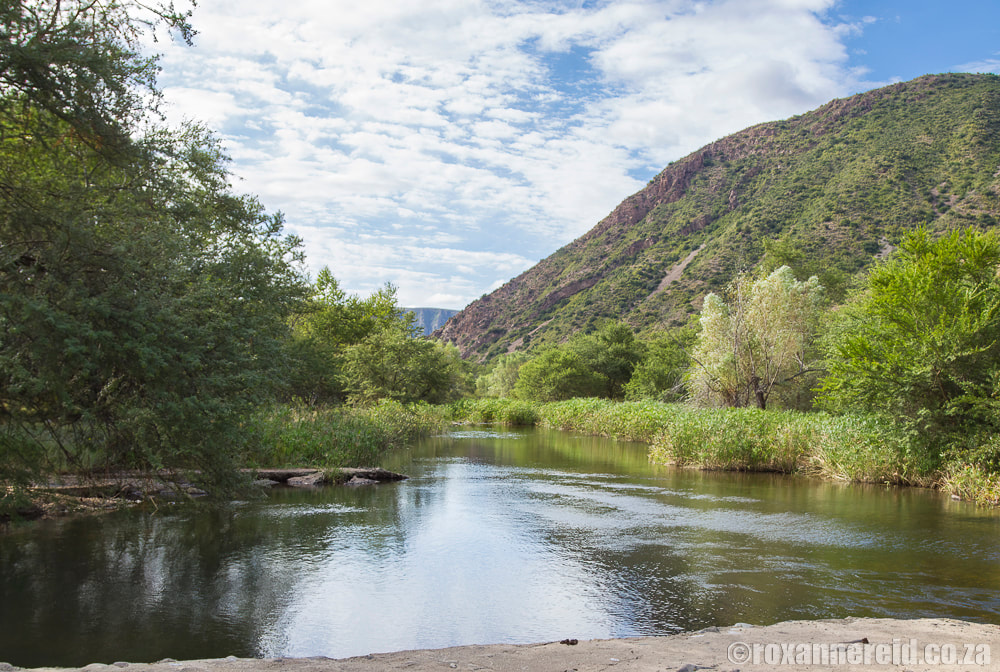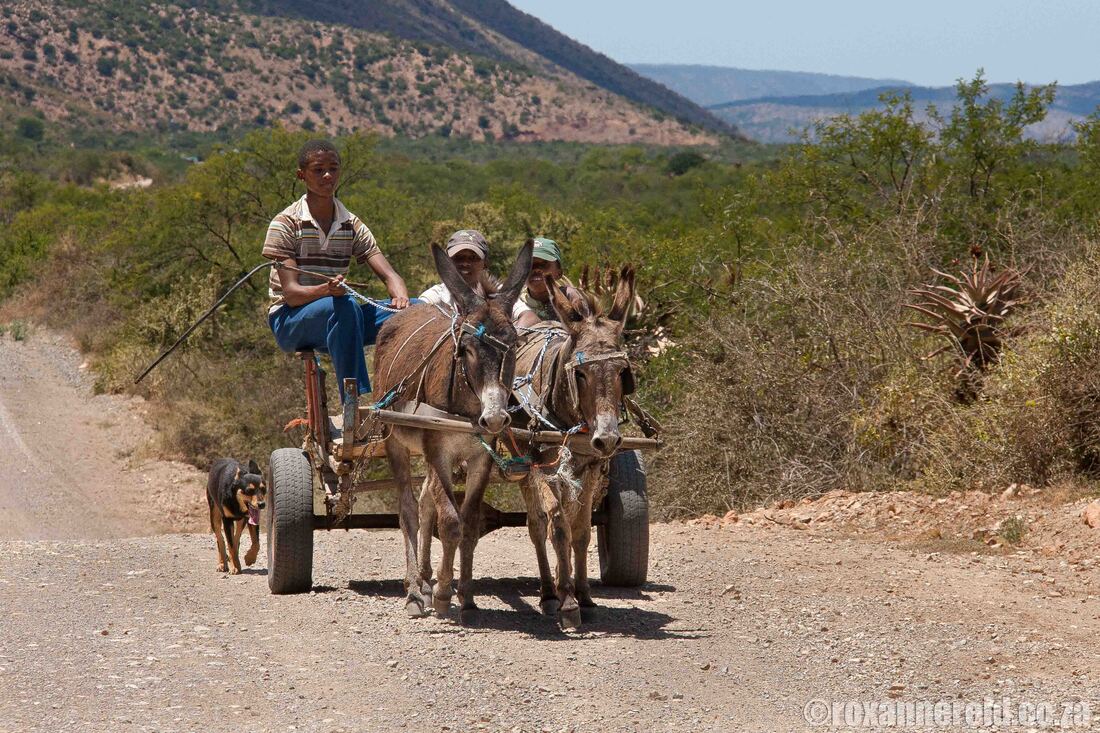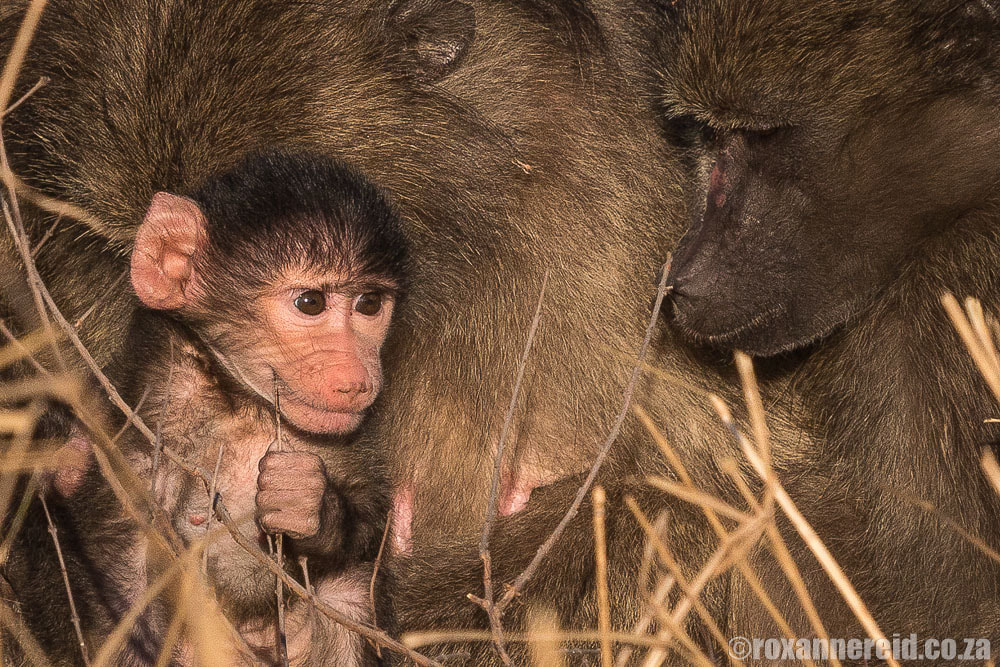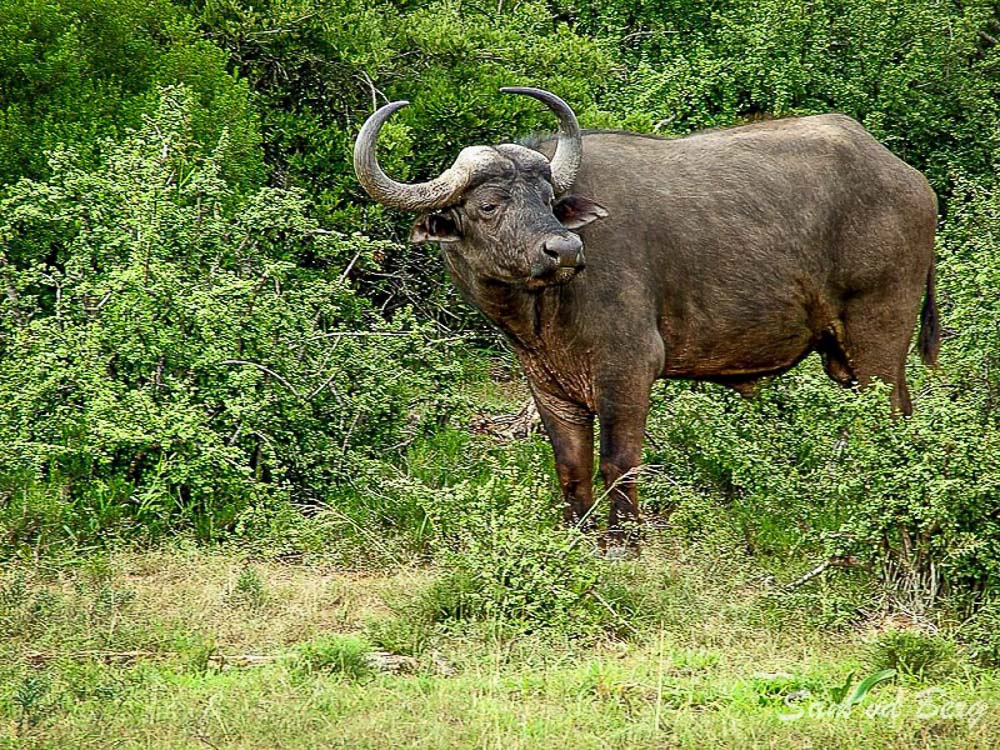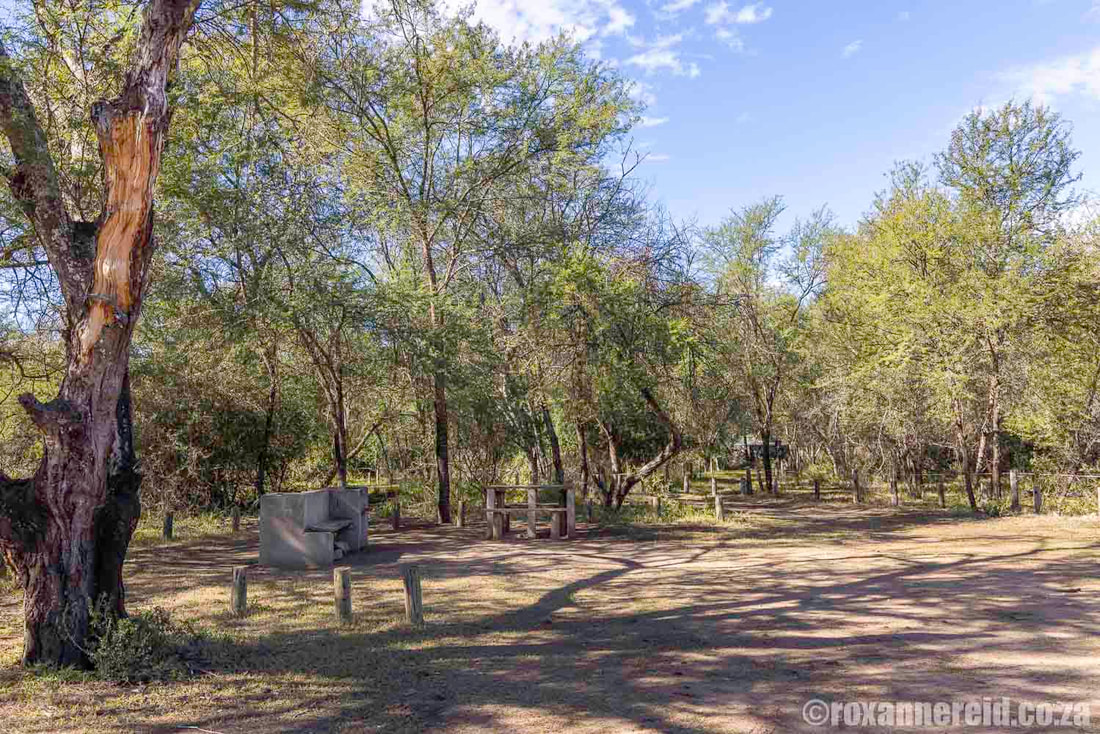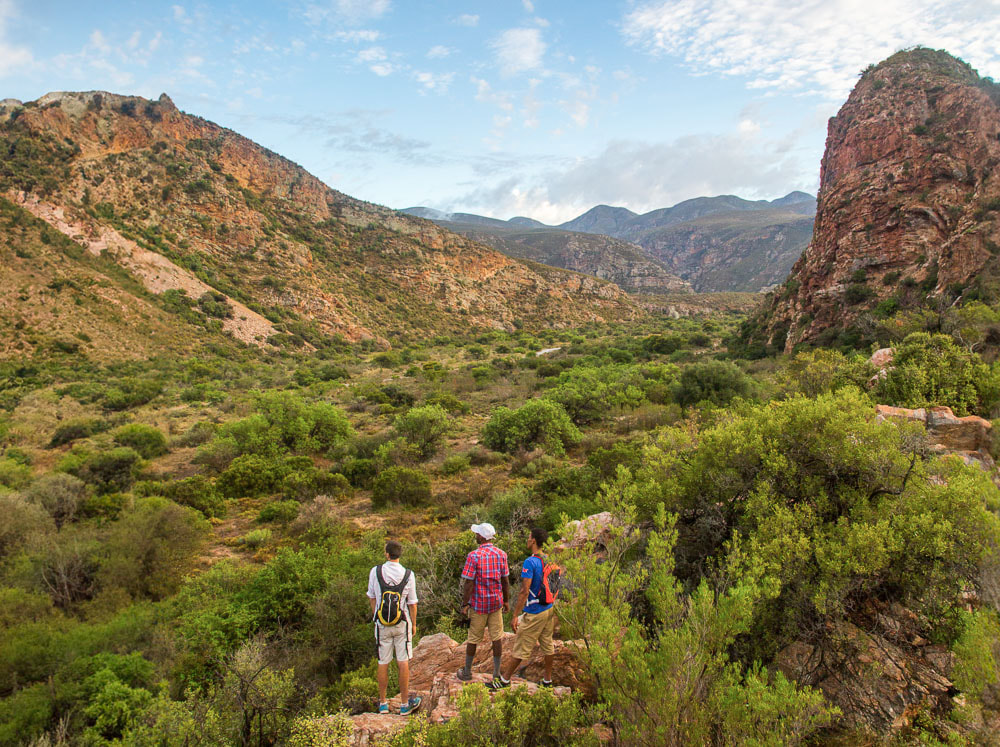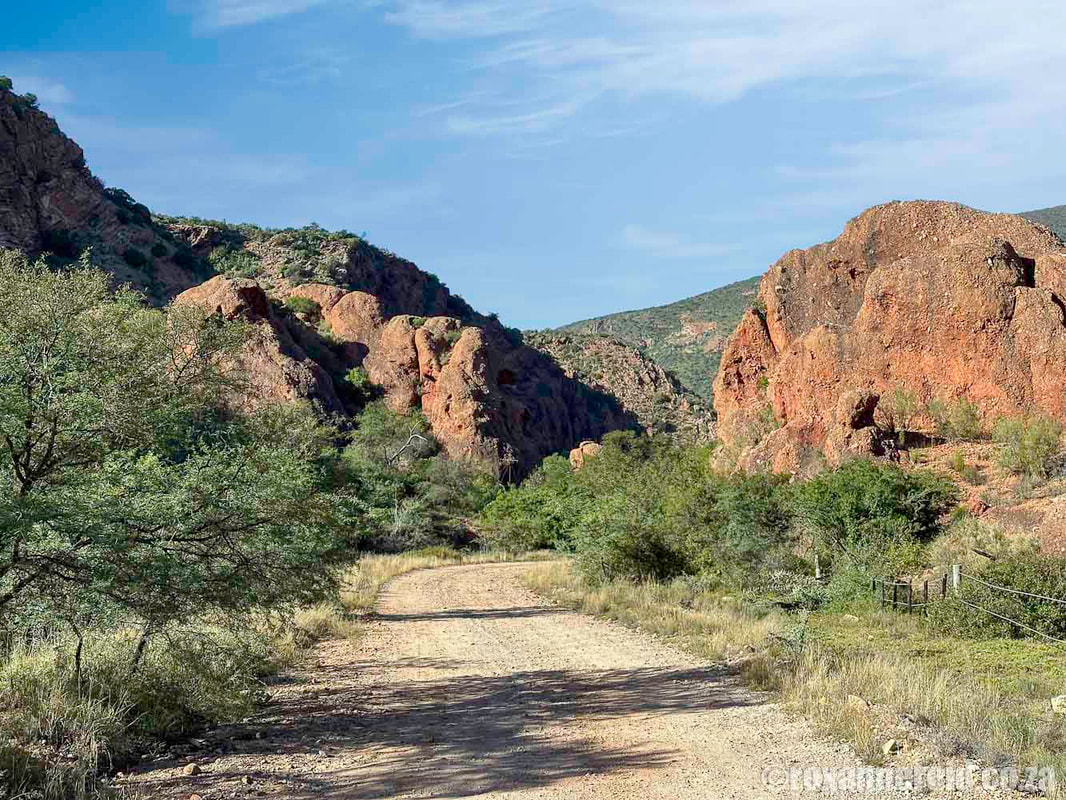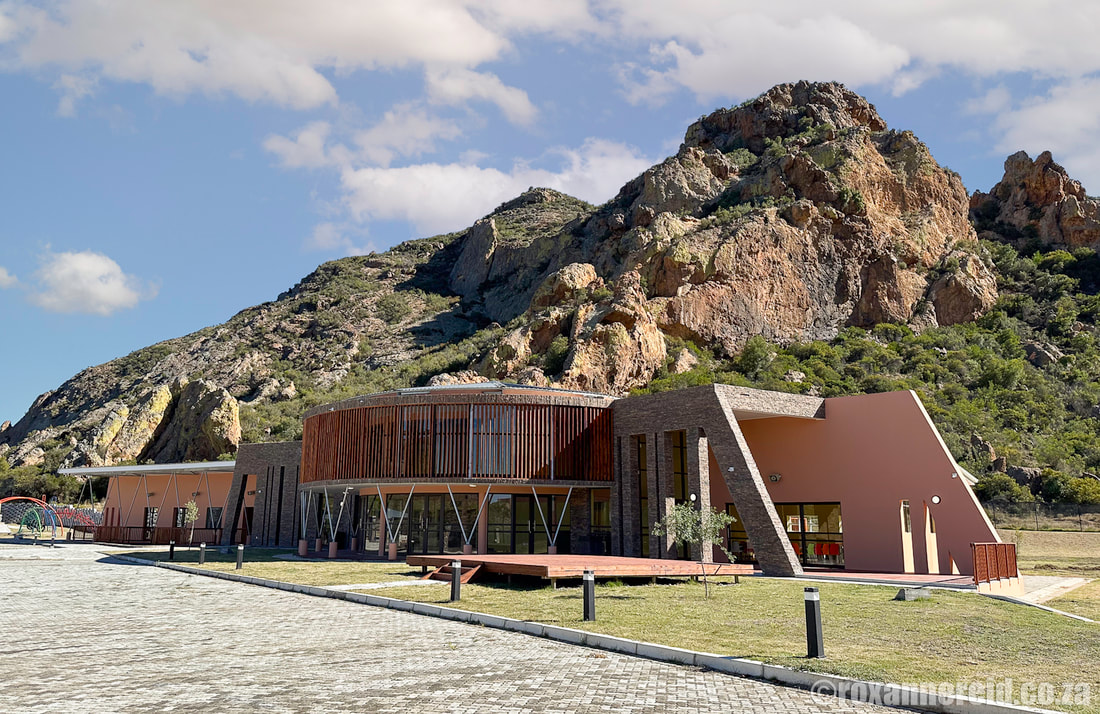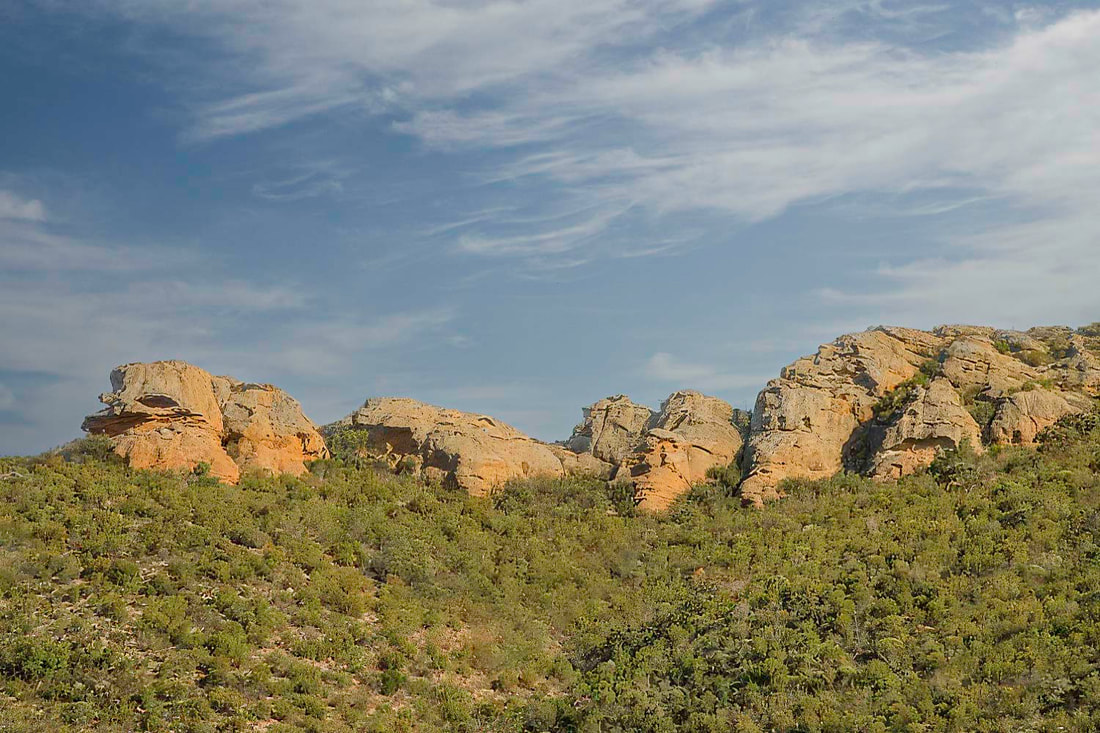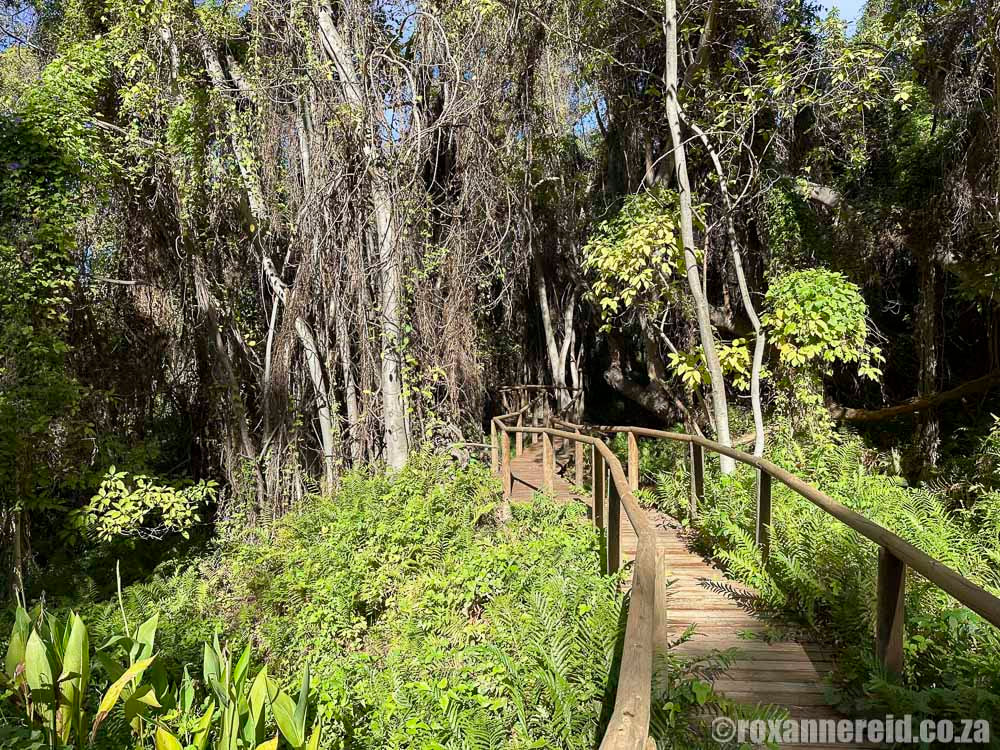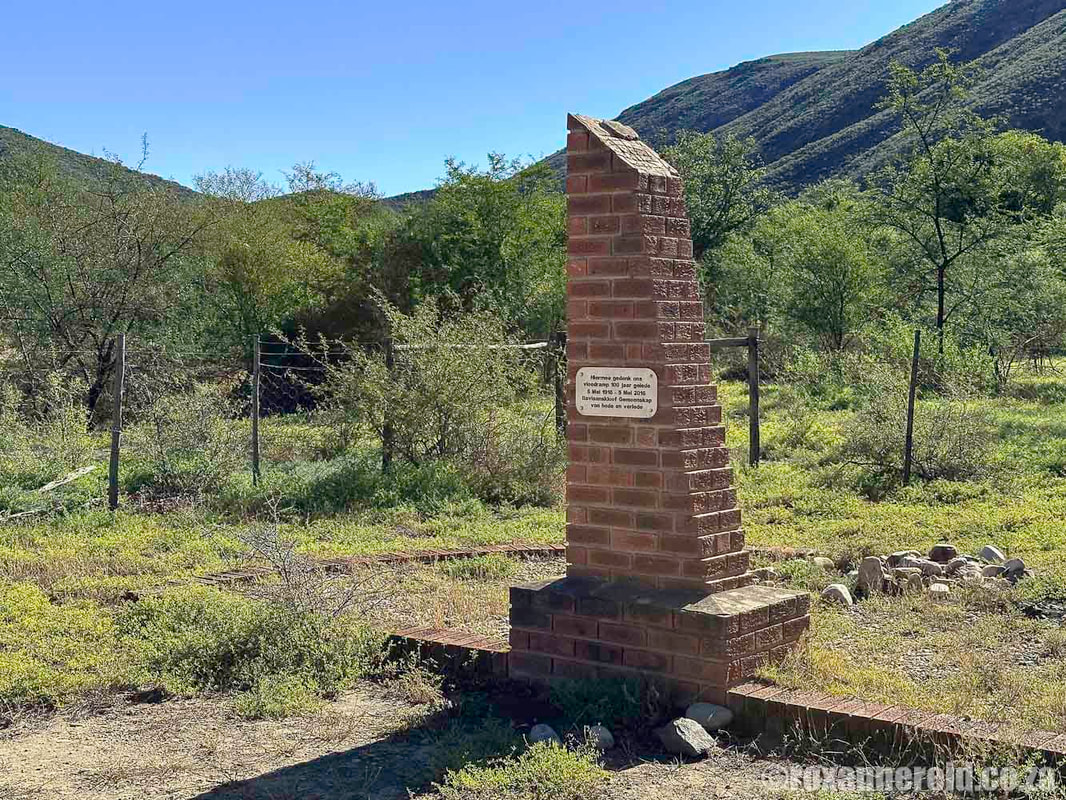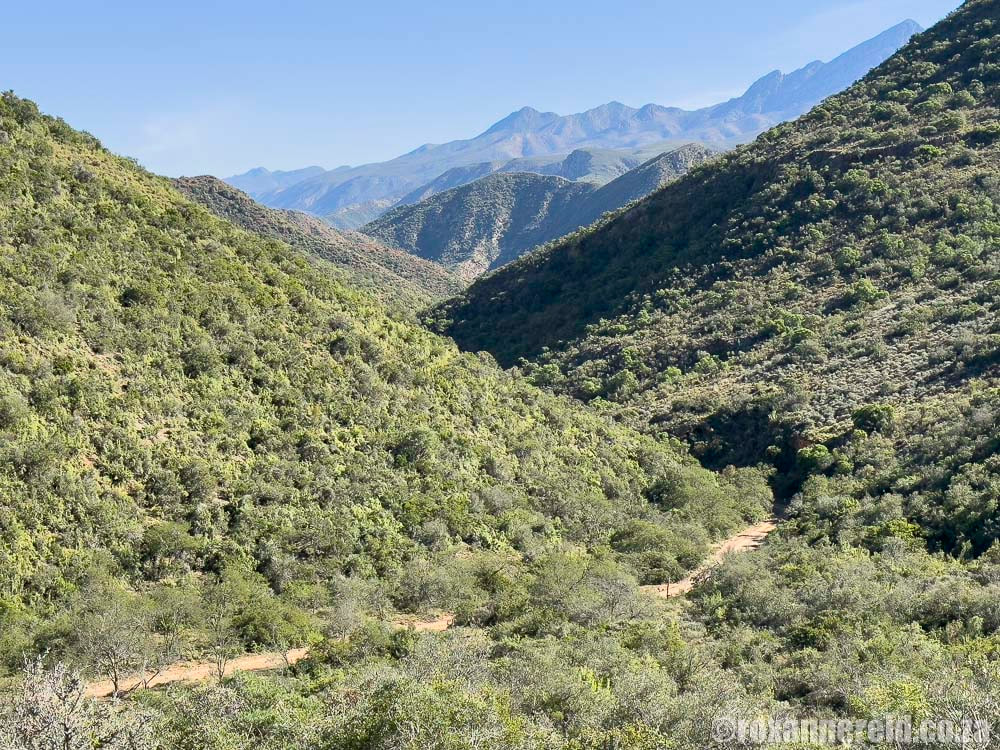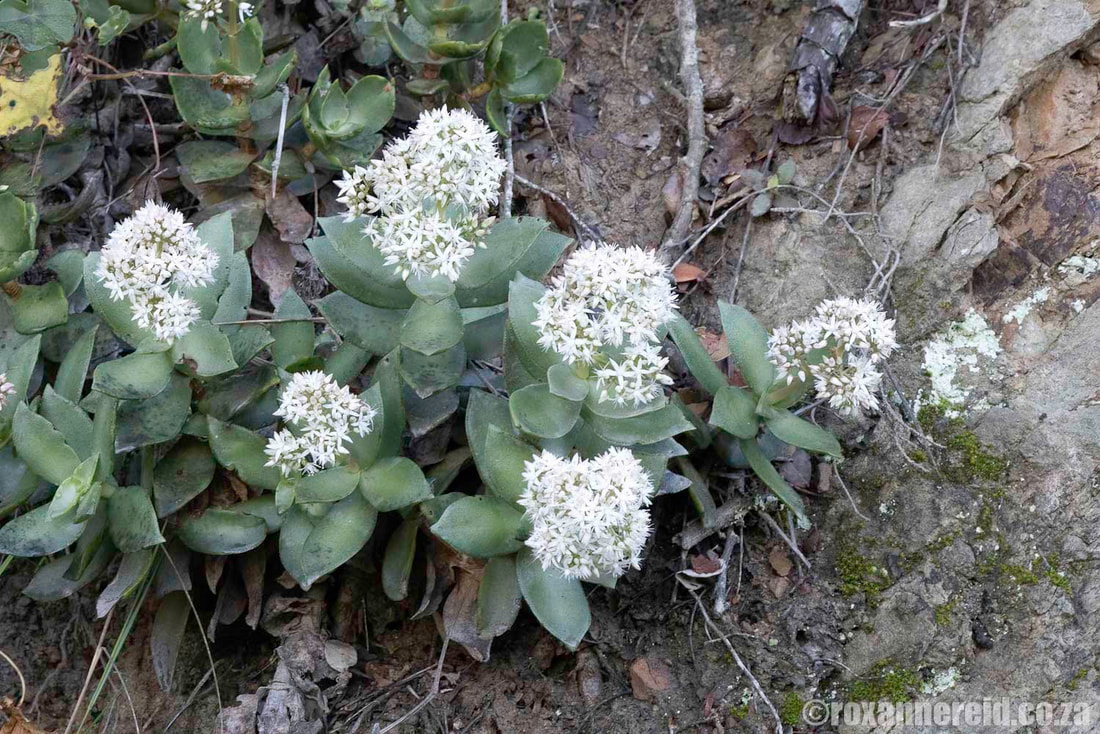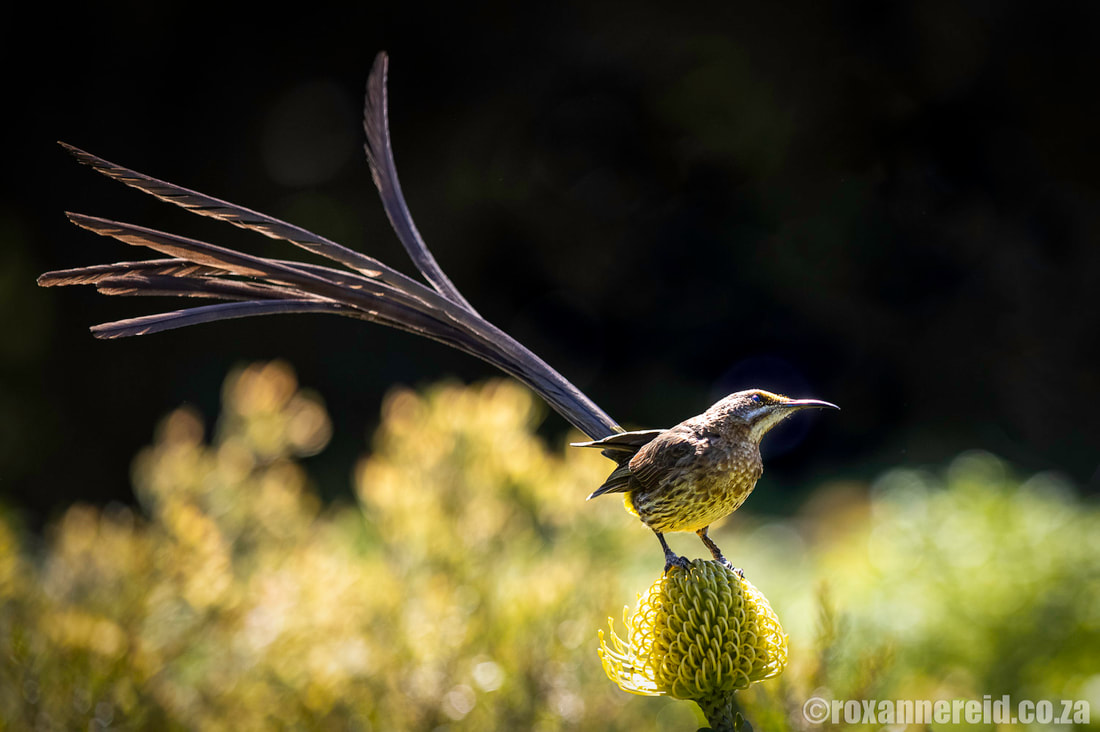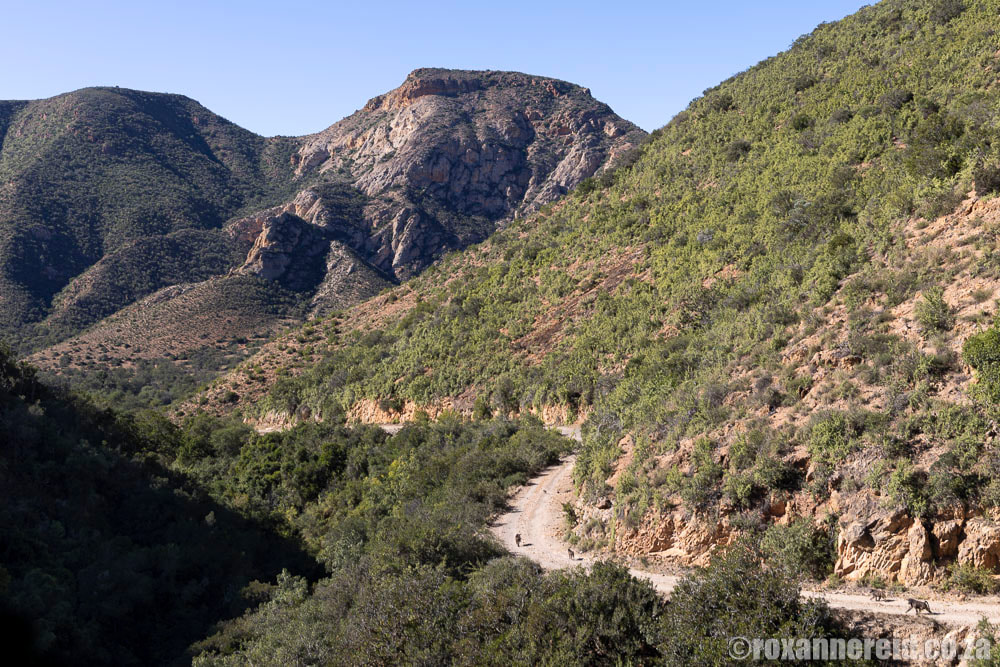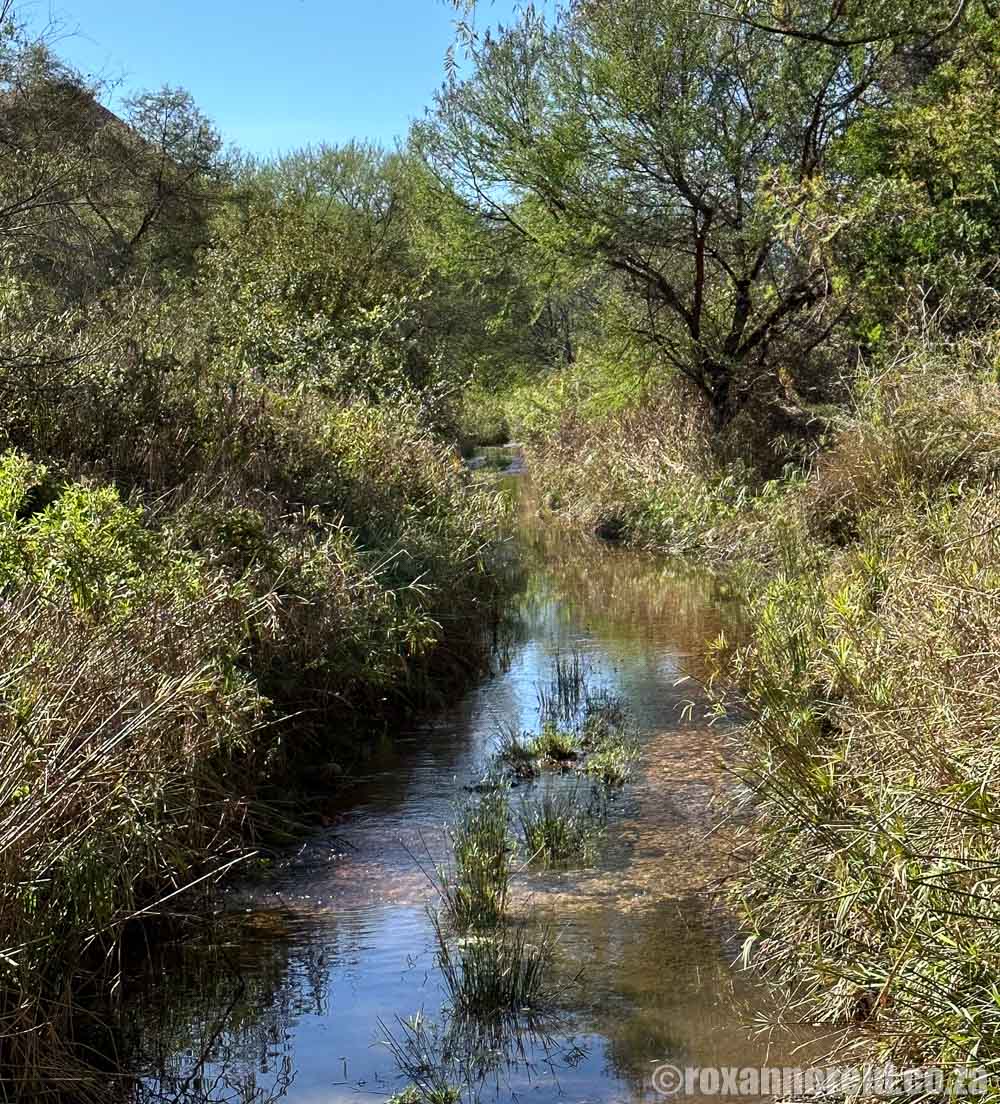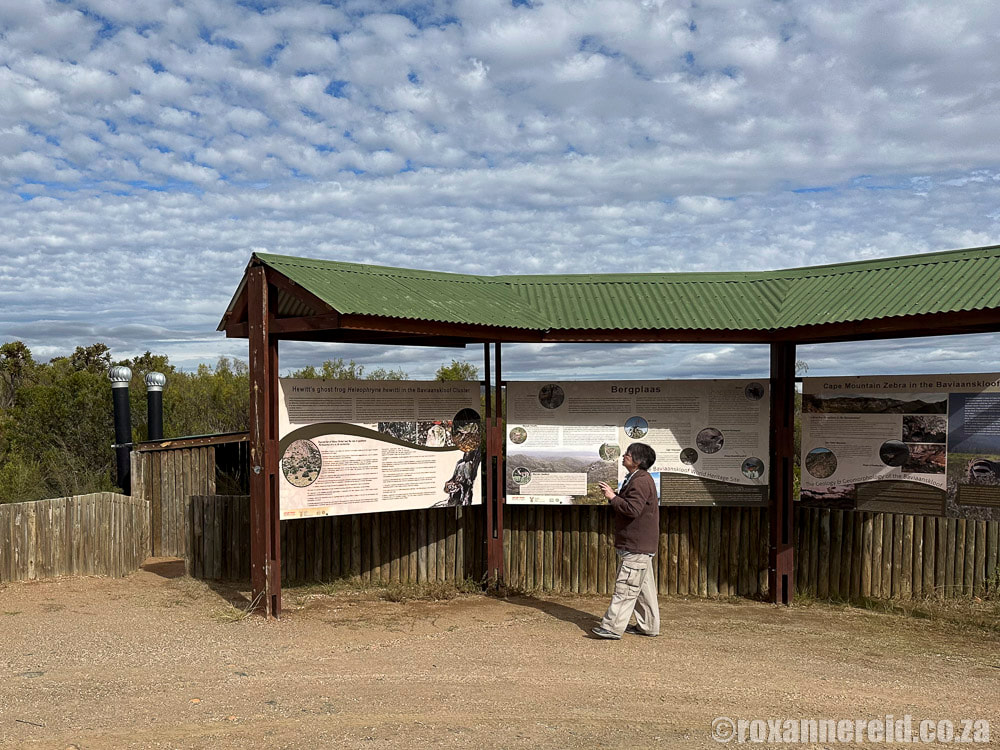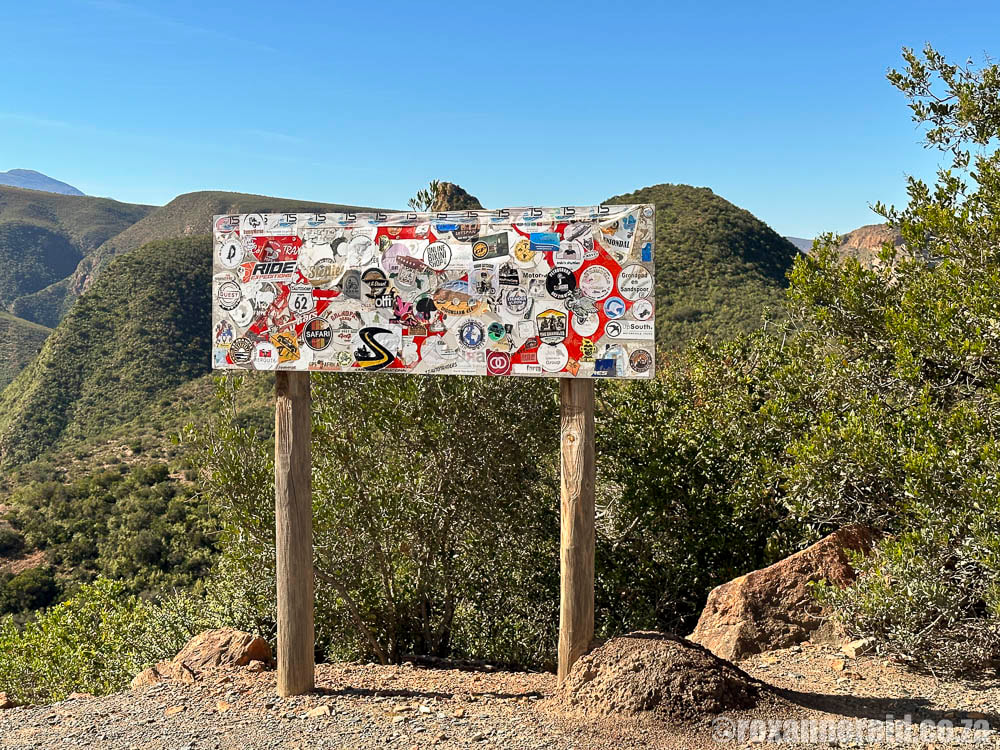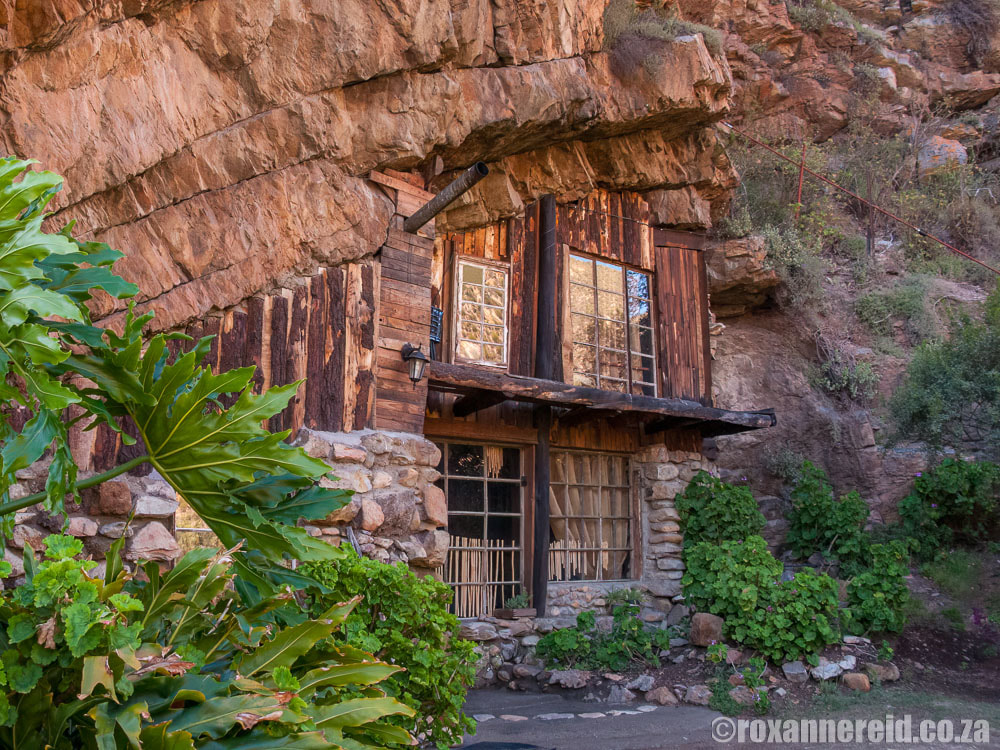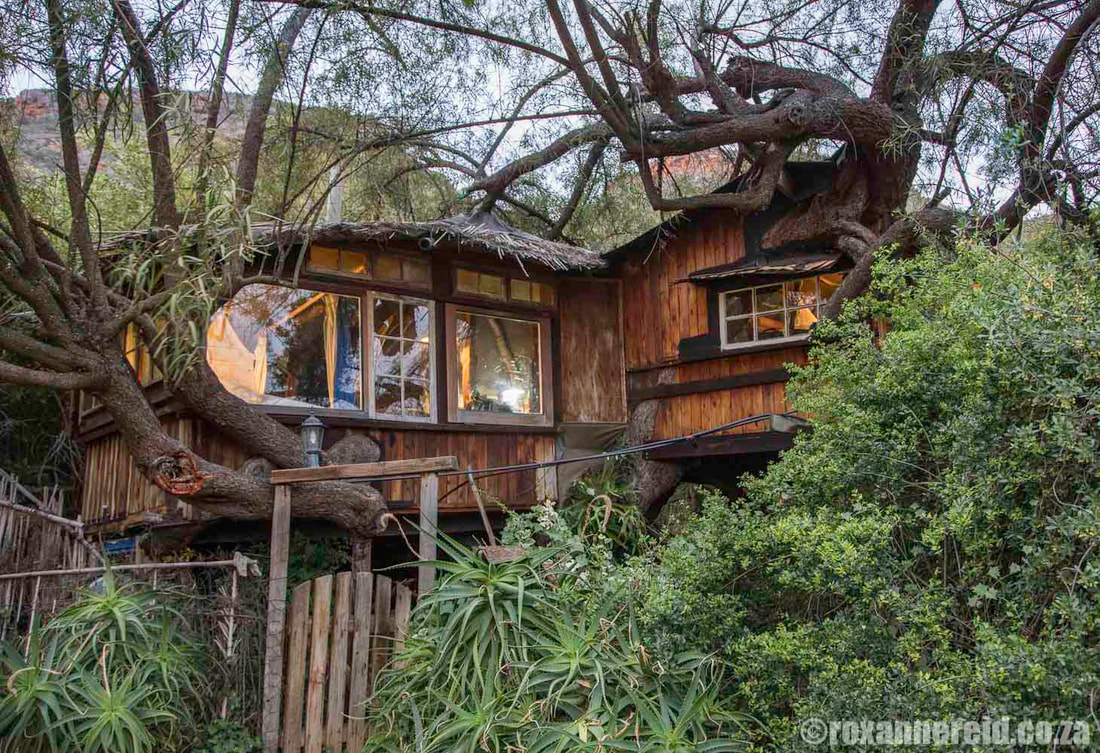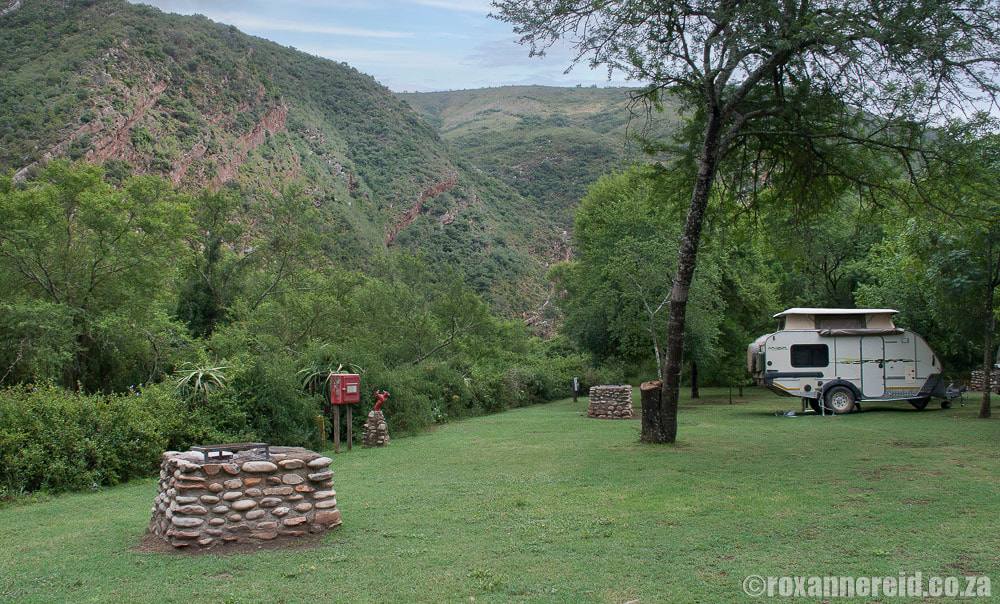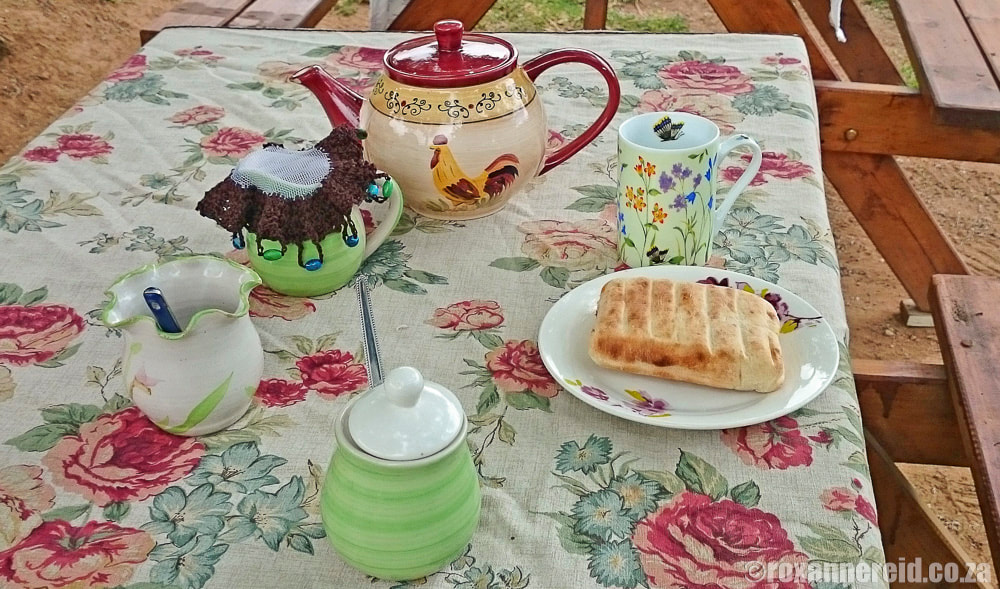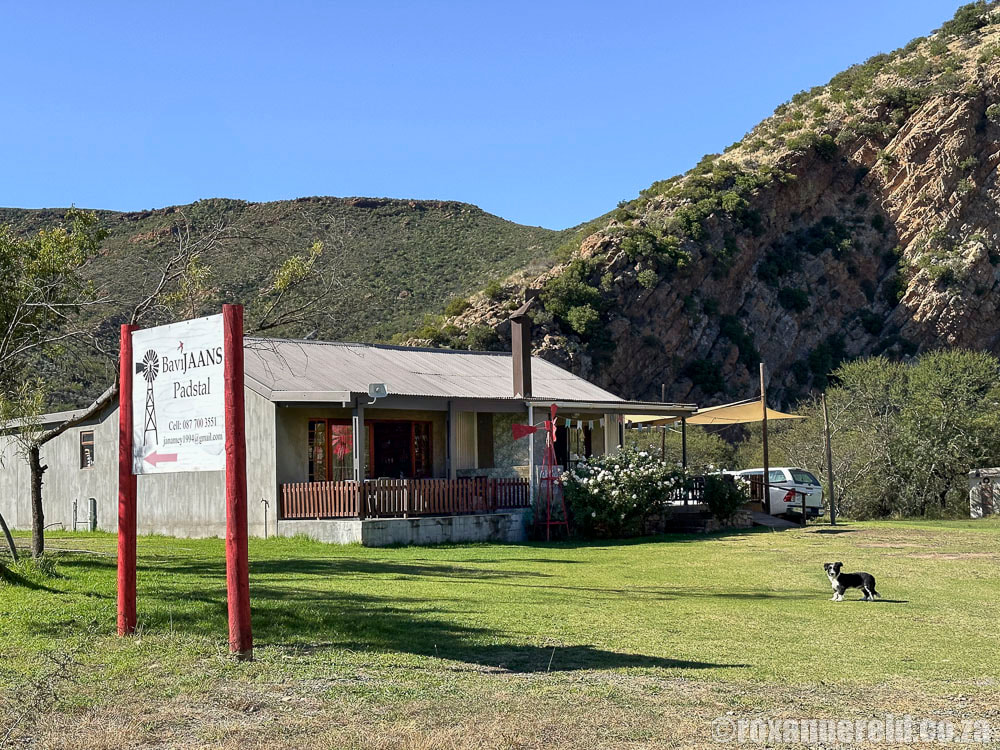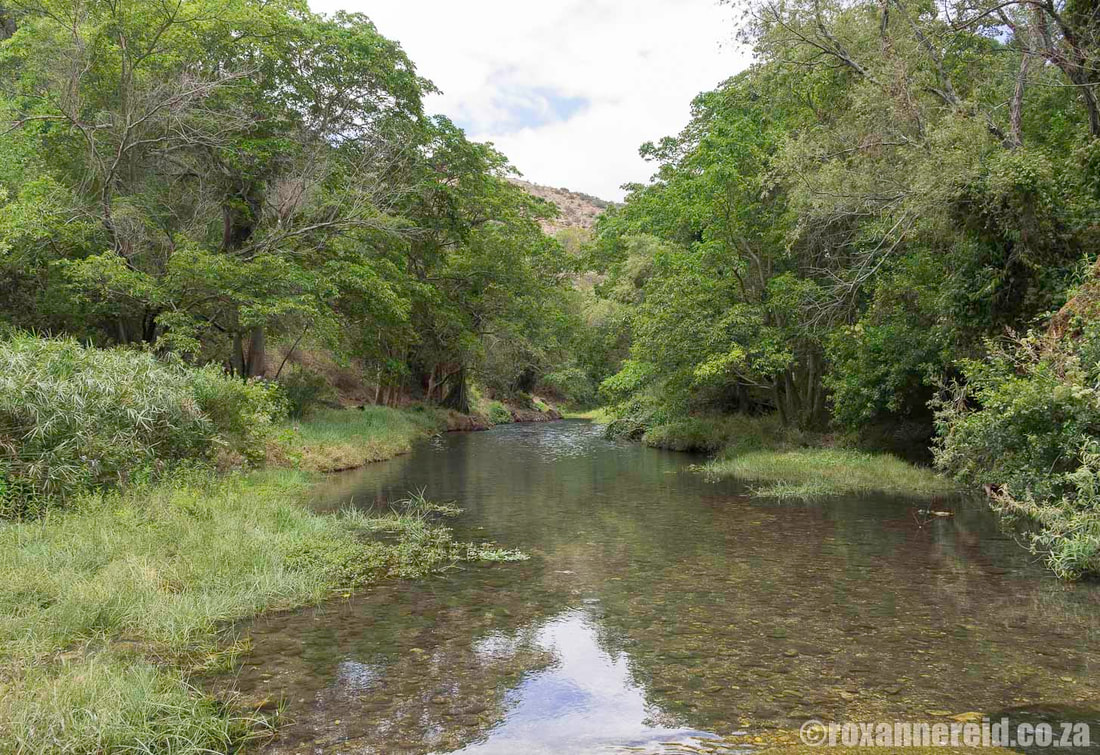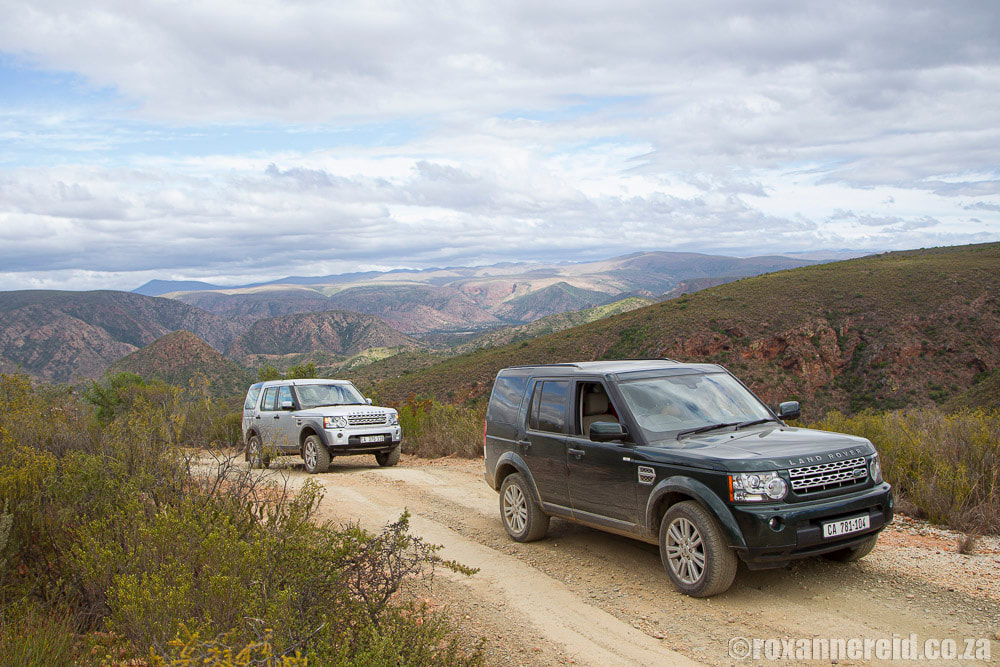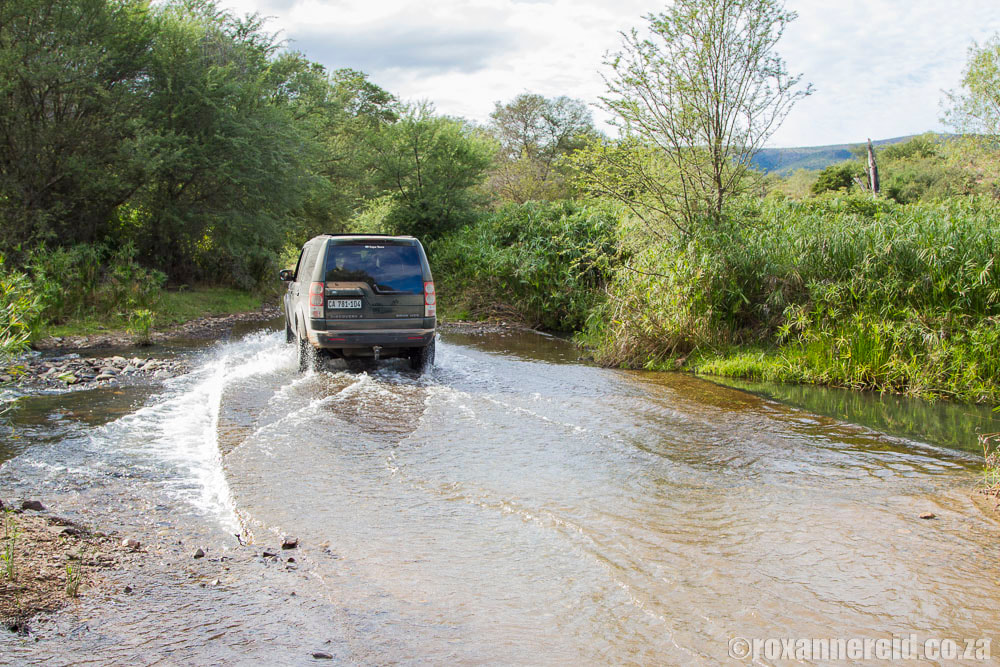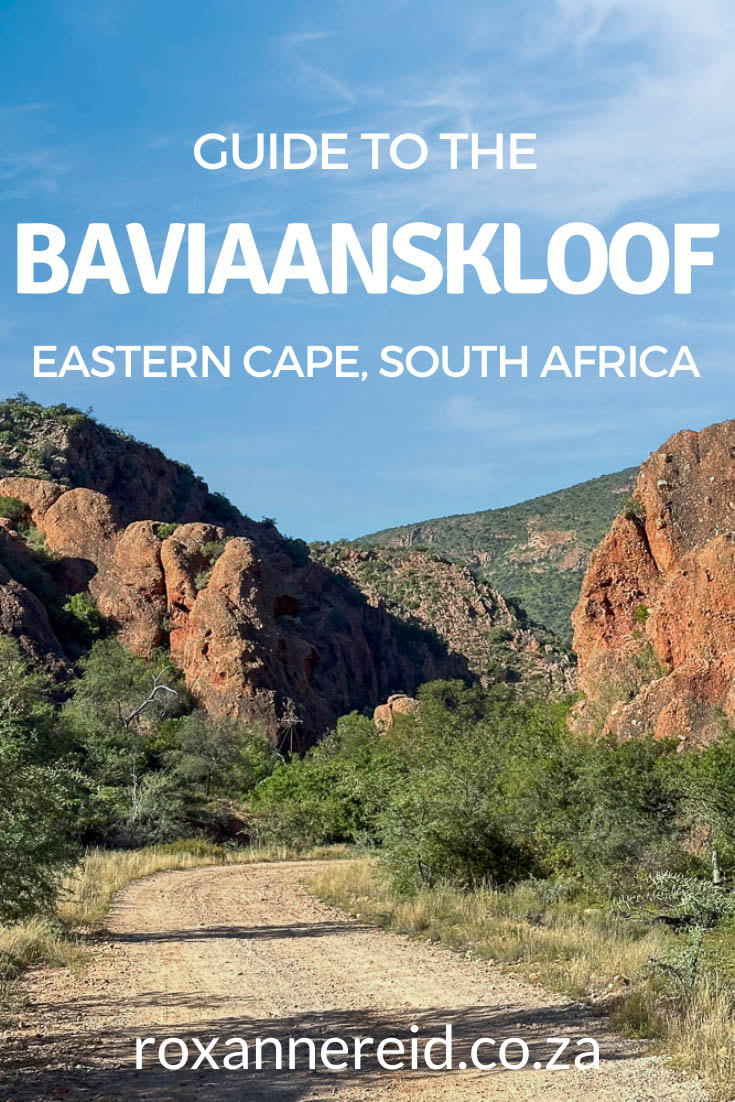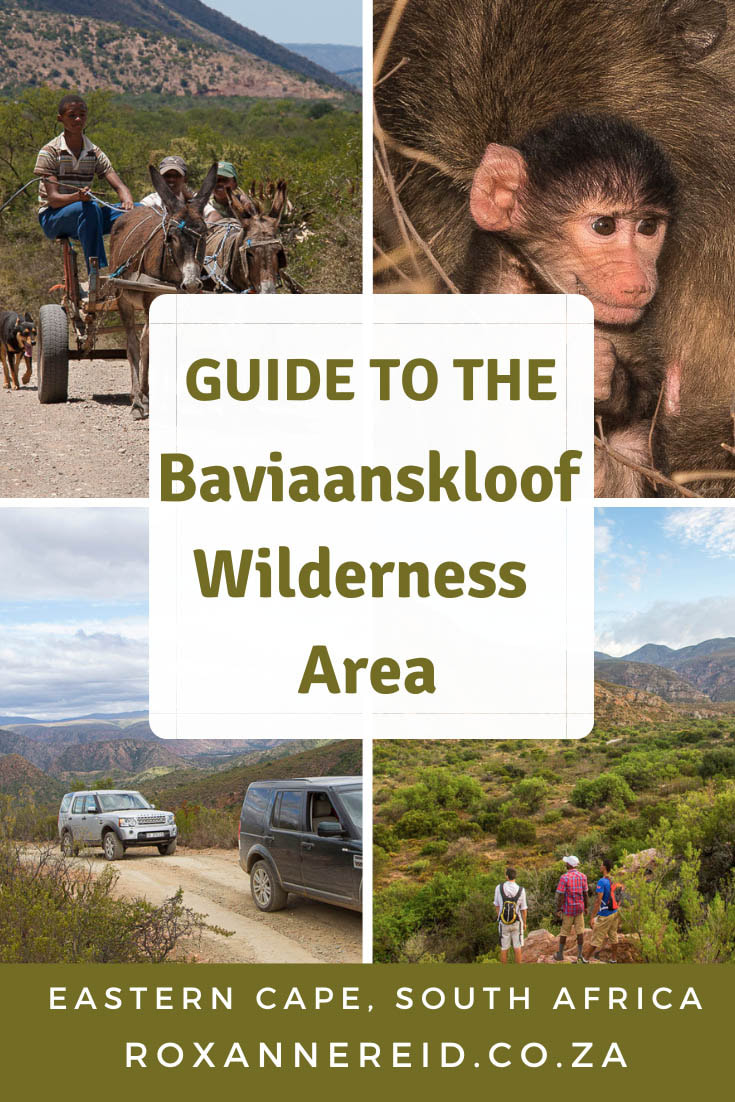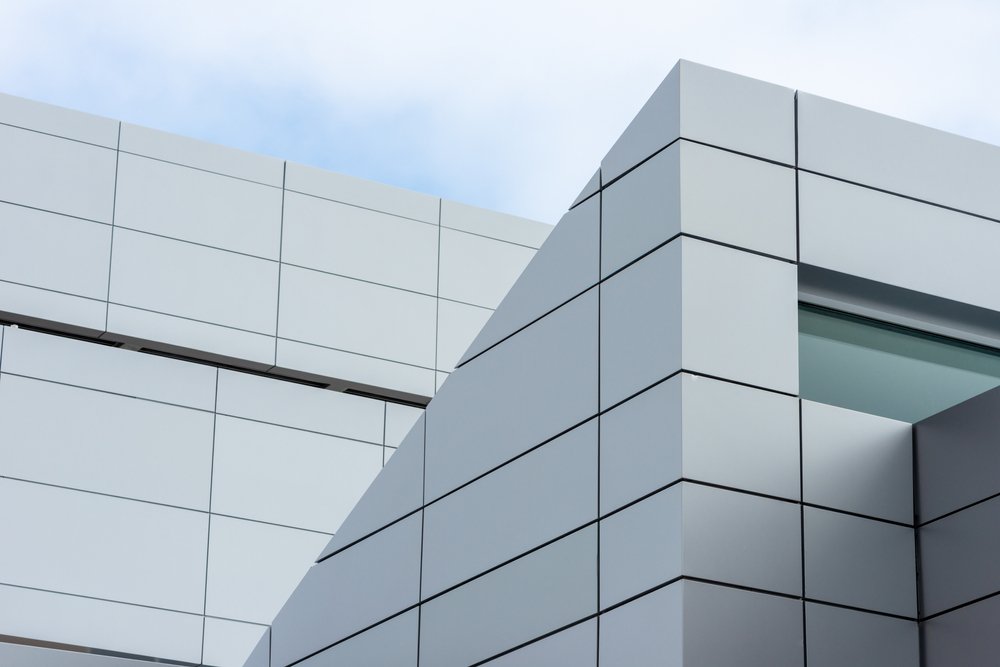By Roxanne ReidI’ve heard it described as a fusion of the Sani and Bloukrans passes, with a smidge of Tsitsikamma beauty thrown in for good measure. I’m talking about the Baviaanskloof Wilderness Area, which is tucked away in the southwestern...
By Roxanne Reid
I’ve heard it described as a fusion of the Sani and Bloukrans passes, with a smidge of Tsitsikamma beauty thrown in for good measure. I’m talking about the Baviaanskloof Wilderness Area, which is tucked away in the southwestern corner of South Africa’s Eastern Cape, somewhere between the Karoo midlands and the Gamtoos Valley.
I’ve heard it described as a fusion of the Sani and Bloukrans passes, with a smidge of Tsitsikamma beauty thrown in for good measure. I’m talking about the Baviaanskloof Wilderness Area, which is tucked away in the southwestern corner of South Africa’s Eastern Cape, somewhere between the Karoo midlands and the Gamtoos Valley.
The Karoo town of Willowmore is the western kick-off point to the R332 that runs through the Baviaanskloof to Patensie in the east. It’s 200km of rugged crags and mountain passes, waterfalls and river pools, colour-saturated sunsets, night skies dense with stars, and gravel back roads where you pass no more than a couple of bakkies or a family in a donkey cart in the space of an hour or two – especially if you go midweek as we did.
There’s so much to enjoy along the way and the roads are fairly rough through the Baviaanskloof Wilderness Area itself so don’t expect to do this route in less than eight or nine hours. Rather slow down and relish the towering cliffs, deep ravines, winding streams, and open plateaus. Wherever you find yourself, the Baviaanskloof is a place where beauty and diversity just about smack you in the face.
If you’re not one to get excited about the marvels of nature without wanting to get out and explore it on foot or in the saddle of your mountain bike, keep reading and you’ll discover how much this place has to offer you.
The valley of baboons
The Baviaanskloof is dominated by the Kouga and Baviaanskloof mountains running in parallel between east and west, both ranges a part of the Cape Fold Mountains. The word Baviaanskloof means ‘valley of baboons’ and it’s an integral part of the Cape Floral Region, which is a UNESCO World Heritage Site.
The valley of baboons
The Baviaanskloof is dominated by the Kouga and Baviaanskloof mountains running in parallel between east and west, both ranges a part of the Cape Fold Mountains. The word Baviaanskloof means ‘valley of baboons’ and it’s an integral part of the Cape Floral Region, which is a UNESCO World Heritage Site.
You’ll be seduced by the peace, the wilderness atmosphere and the general helpfulness of the locals. If you overshoot a turnoff and pull over before reversing, a woman in a bakkie will stop to find out if you’re ok; drivers of passing cars will wave; even workers fixing the roads after heavy rains will take time to wave and smile.
There are more than 40 river crossings over low causeways that add to the excitement and splendour of the adventure. Just be aware that they may flood after heavy rain – but more about that later.
The Baviaanskloof is divided into three parts and we’ll look at all three in more detail below. They are:The western section from Willowmore to the western entrance gate to the Wilderness Area is about 100km, dominated by farms and guest houses or self-catering cottages, many of them providing hiking, mountain biking and 4x4 trails. Zandvlakte is the last farm about 4km before the gate.The Baviaanskloof Wilderness Area or nature reserve is about 60km through a wonderfully unspoiled wilderness rich in plants and wildlife.The eastern section from the eastern gate at Poortjies to Patensie is about 40km along the Grootrivierpoort and Gamtoos River. There are also a number of guest houses and self-catering cottages in this section.
?Since 2002, there’s also the wider Baviaanskloof Mega-Reserve, which combines the Wilderness Area with a network of private and communal land. A Mega-Reserve is a largely pristine habitat big enough to encourage all the ecological processes needed to maintain biodiversity in the long term. The Baviaanskloof Mega-Reserve is managed in co-operation with conservation authorities and should eventually reach 500 000ha.
Although you can drive the Baviaanskloof route in either direction, I’ve chosen to follow and describe it from west to east. To orientate yourself, see this map of the Baviaanskloof.
Things to do in the Baviaanskloof
For the more adventurous, there are heaps of activities to keep you busy, whether you want to mountain-bike along the scenic R332 or a mountain trail, go rock and mountain climbing, drive a 4x4 trail, or hike into ravines, across rivers and up to waterfalls. Ask your hosts for what’s available in the area where you’re staying (see ‘Baviaanskloof acommodation’ below). You can also talk to the guys at the tourism centre in Willowmore’s municipal building on Knysna Street, or Tolbos in Patensie (on your right as you come into Patensie from Hankey); it’s a restaurant/shop that doubles as an info centre.
1. Animal spotting
Drive through the reserve for a chance to spot mammals like antelope, buffaloes and baboons (see ‘Wildlife’ below).
There are more than 40 river crossings over low causeways that add to the excitement and splendour of the adventure. Just be aware that they may flood after heavy rain – but more about that later.
The Baviaanskloof is divided into three parts and we’ll look at all three in more detail below. They are:The western section from Willowmore to the western entrance gate to the Wilderness Area is about 100km, dominated by farms and guest houses or self-catering cottages, many of them providing hiking, mountain biking and 4x4 trails. Zandvlakte is the last farm about 4km before the gate.The Baviaanskloof Wilderness Area or nature reserve is about 60km through a wonderfully unspoiled wilderness rich in plants and wildlife.The eastern section from the eastern gate at Poortjies to Patensie is about 40km along the Grootrivierpoort and Gamtoos River. There are also a number of guest houses and self-catering cottages in this section.
?Since 2002, there’s also the wider Baviaanskloof Mega-Reserve, which combines the Wilderness Area with a network of private and communal land. A Mega-Reserve is a largely pristine habitat big enough to encourage all the ecological processes needed to maintain biodiversity in the long term. The Baviaanskloof Mega-Reserve is managed in co-operation with conservation authorities and should eventually reach 500 000ha.
Although you can drive the Baviaanskloof route in either direction, I’ve chosen to follow and describe it from west to east. To orientate yourself, see this map of the Baviaanskloof.
Things to do in the Baviaanskloof
For the more adventurous, there are heaps of activities to keep you busy, whether you want to mountain-bike along the scenic R332 or a mountain trail, go rock and mountain climbing, drive a 4x4 trail, or hike into ravines, across rivers and up to waterfalls. Ask your hosts for what’s available in the area where you’re staying (see ‘Baviaanskloof acommodation’ below). You can also talk to the guys at the tourism centre in Willowmore’s municipal building on Knysna Street, or Tolbos in Patensie (on your right as you come into Patensie from Hankey); it’s a restaurant/shop that doubles as an info centre.
1. Animal spotting
Drive through the reserve for a chance to spot mammals like antelope, buffaloes and baboons (see ‘Wildlife’ below).
2. Bird-watching
While you drive through the reserve or stay over in Baviaanskloof accommodation, keep your binos near at hand for some bird watching (see ‘Wildlife’ below).
3. Star-gazing
Stay over anywhere in the Baviaanskloof and make use of the clear skies and lack of light pollution to do some star-gazing. If you time your visit to avoid the full moon, you’ll find a dark sky perforated by millions of stars.
4. Picnicking
Stop at the Smitskraal picnic site about halfway between Grasnek Pass and Langkop Pass inside the Wilderness Area. There are braais, picnic tables and benches, loos, but no bins because baboons dig in and make a mess. Please take all your rubbish with you.
Another picnic site on the western side of the reserve is at Sewefontein (see Sewefontein Wild Fig Tree Forest in ‘Attractions west of the Wilderness Area’ below).
While you drive through the reserve or stay over in Baviaanskloof accommodation, keep your binos near at hand for some bird watching (see ‘Wildlife’ below).
3. Star-gazing
Stay over anywhere in the Baviaanskloof and make use of the clear skies and lack of light pollution to do some star-gazing. If you time your visit to avoid the full moon, you’ll find a dark sky perforated by millions of stars.
4. Picnicking
Stop at the Smitskraal picnic site about halfway between Grasnek Pass and Langkop Pass inside the Wilderness Area. There are braais, picnic tables and benches, loos, but no bins because baboons dig in and make a mess. Please take all your rubbish with you.
Another picnic site on the western side of the reserve is at Sewefontein (see Sewefontein Wild Fig Tree Forest in ‘Attractions west of the Wilderness Area’ below).
4. 4x4 trails
If simply driving through the Baviaanskloof Wilderness Area isn’t enough of a 4x4 challenge for you, here are some places where you can stay to do a 4x4 trail or experience one as a day visitor.Uitspan Guest FarmMakkedaat CavesBo-Kloof Guest FarmBaviaans Guest CottagesDoringkloof Bush CampRus en Vrede 4x4 TrailGonjah
?5. Hiking trails
Keen hikers will be pleased to know there’s a feast of trails for them to explore.
The Leopard Trail at Cedar Falls is the Big Kahuna, a three-night, four-day slackpacking trail, with your bags transported to the next hut while you hike with only a day-pack. It’s not for sissies or the unfit; the longest day is 22km, and there are some fairly steep climbs and descents.
If simply driving through the Baviaanskloof Wilderness Area isn’t enough of a 4x4 challenge for you, here are some places where you can stay to do a 4x4 trail or experience one as a day visitor.Uitspan Guest FarmMakkedaat CavesBo-Kloof Guest FarmBaviaans Guest CottagesDoringkloof Bush CampRus en Vrede 4x4 TrailGonjah
?5. Hiking trails
Keen hikers will be pleased to know there’s a feast of trails for them to explore.
The Leopard Trail at Cedar Falls is the Big Kahuna, a three-night, four-day slackpacking trail, with your bags transported to the next hut while you hike with only a day-pack. It’s not for sissies or the unfit; the longest day is 22km, and there are some fairly steep climbs and descents.
?Some guest farms that have hikes suitable for day visitors (for a fee) include:Uitspan Guest Farm (also a hike to a cave with Bushman paintings)Makkedaat CavesDuiwekloof Lodge (you can go horse riding here too)Baviaans Guest CottagesBo-Kloof Guest Farm (hiking and rock climbing)Doringkloof Bush Camp (also Bushman paintings)Gonjah For more hikes in the area, see Baviaans Tourism’s hiking trails list.
6. Mountain biking trails
Bring your mountain bike and take to the gravel roads of the Baviaanskloof. (Note, though, that you won’t be allowed to ride between the gates of the reserve unsupported by a vehicle.) A number of guest farms have mountain biking tracks for guests, and others are open to day visitors for a small fee. Consider some of these:Makkedaat CavesCedar Falls (only for guests at the accommodation)Baviaans Guest CottagesDoringkloof Bush CampGonjah
Attractions west of the Wilderness Area
The area between the N9 south of Willowmore and the Wilderness Area to the east is a 100km stretch of mountains and valleys, with angora goat, olive and vegetable seed farms, as well as some growing rosemary and lavender for essential oils. Many of the farms also offer guest accommodation as well as hikes, mountain biking tracks and 4x4 trails.
Nuwekloof Pass – This pass is officially the entrance to the Baviaanskloof in the west. It’s a winding-climbing-dropping medley of lovely rock formations, towering lichen-splashed cliffs, and plenty of aloes in bloom in winter. Look out for Willowmore cedar trees, which are endemic to the area, and renosterveld vegetation. Back in 1920 when Model T Fords were still around, there was an interesting way to drive the pass. Because the fuel tank fed petrol to the engine by gravity, you had to drive up the pass backwards. Not something I’d like to try today.
6. Mountain biking trails
Bring your mountain bike and take to the gravel roads of the Baviaanskloof. (Note, though, that you won’t be allowed to ride between the gates of the reserve unsupported by a vehicle.) A number of guest farms have mountain biking tracks for guests, and others are open to day visitors for a small fee. Consider some of these:Makkedaat CavesCedar Falls (only for guests at the accommodation)Baviaans Guest CottagesDoringkloof Bush CampGonjah
Attractions west of the Wilderness Area
The area between the N9 south of Willowmore and the Wilderness Area to the east is a 100km stretch of mountains and valleys, with angora goat, olive and vegetable seed farms, as well as some growing rosemary and lavender for essential oils. Many of the farms also offer guest accommodation as well as hikes, mountain biking tracks and 4x4 trails.
Nuwekloof Pass – This pass is officially the entrance to the Baviaanskloof in the west. It’s a winding-climbing-dropping medley of lovely rock formations, towering lichen-splashed cliffs, and plenty of aloes in bloom in winter. Look out for Willowmore cedar trees, which are endemic to the area, and renosterveld vegetation. Back in 1920 when Model T Fords were still around, there was an interesting way to drive the pass. Because the fuel tank fed petrol to the engine by gravity, you had to drive up the pass backwards. Not something I’d like to try today.
?Raaskrans – This name means ‘noisy cliff’ and there are two plausible theories of its origin. One refers to the fact that in the old days, drivers would hoot before any blind curves, such as you find here. The other ascribes the name to the noise made by gushing water.
New Interpretive Centre – This architecturally interesting info centre opened in February 2022 but was still not fully operational when we visited in May 2023. It did have two interactive screens showing Baviaanskloof accommodation options, and two 3D presentations about the area and its natural and cultural heritage. We were told that a café and crafters’ stalls were still on tender. The centre is government funded but managed by the Eastern Cape Parks and Tourism Agency.
New Interpretive Centre – This architecturally interesting info centre opened in February 2022 but was still not fully operational when we visited in May 2023. It did have two interactive screens showing Baviaanskloof accommodation options, and two 3D presentations about the area and its natural and cultural heritage. We were told that a café and crafters’ stalls were still on tender. The centre is government funded but managed by the Eastern Cape Parks and Tourism Agency.
Seven Dwarves – When you see the sign not long after Raaskrans, try to find a place to stop your vehicle safely so you can pick out the rock formations that put earlier visitors in mind of Snow White and her friends.
Vensterklip – You’ll recognise the rock that bears this name because it has a hole or ‘window’ through the middle of it. Apparently, the area was the scene of a clash between police and a group of Boer rebels during the Anglo-Boer War of 1899-1902.?
Vensterklip – You’ll recognise the rock that bears this name because it has a hole or ‘window’ through the middle of it. Apparently, the area was the scene of a clash between police and a group of Boer rebels during the Anglo-Boer War of 1899-1902.?
?Vero’s – Stop here for roosterkoek with jam or cheese. Duck into the small craft shop behind the house. When last we visited, plans were afoot for a much bigger one on a cleared piece of land nearby. The garden used to be colourful and weirdly interesting, but Vero’s mom was the gardener and she died a few years back.
Bavijaans Padstal – This small farmstall makes a good place to stop for breakfast or lunch, as well as to stock up with things like ice and wood for your stay in the kloof.
Sewefontein Wild Fig Tree Forest – You’ll find the Sewefontein Wild Fig Tree Forest about 75km from the N9 on the Willowmore side. Pay a fee at reception and let a guide take you along a very short boardwalk to the shady forest on this community farm which has, as the name suggests, seven natural springs. According to our guide the huge trees that tower above you are between 500 000 and a million years old. Spend some time listening for birds and admiring the forest, then pop over the road to the picnic site to enjoy some sarmies or a braai.
Bavijaans Padstal – This small farmstall makes a good place to stop for breakfast or lunch, as well as to stock up with things like ice and wood for your stay in the kloof.
Sewefontein Wild Fig Tree Forest – You’ll find the Sewefontein Wild Fig Tree Forest about 75km from the N9 on the Willowmore side. Pay a fee at reception and let a guide take you along a very short boardwalk to the shady forest on this community farm which has, as the name suggests, seven natural springs. According to our guide the huge trees that tower above you are between 500 000 and a million years old. Spend some time listening for birds and admiring the forest, then pop over the road to the picnic site to enjoy some sarmies or a braai.
?Babes se Winkel – This trading store is a good place to stop if you feel like a packet of chips, a chocolate bar or a cold drink, or to buy canned food items you forgot to bring for your self-catering stay nearby. It has an old-fashioned charm like shops you might have found 50 or more years ago.
Campbell Monument – The Baviaanskloof might seem very dry when you visit, but given the number of rivers that flow through it, you can imagine how often the area experiences floods. The Campbell Monument was built by local farmers to commemorate people who lost their lives in a devastating flood in May 1916.
Campbell Monument – The Baviaanskloof might seem very dry when you visit, but given the number of rivers that flow through it, you can imagine how often the area experiences floods. The Campbell Monument was built by local farmers to commemorate people who lost their lives in a devastating flood in May 1916.
Dutch Reformed Church – On your left when you get to Zandvlakte is a small white church with a red iron roof. It was built in 1918 after a previous church at Kleinpoort washed away in the 1916 flood.
Baviaanskloof Wilderness Area
It doesn’t really matter whether you refer to it as the Baviaanskloof Wilderness Area or Baviaanskloof nature reserve; what does is that it’s a huge reason why people come here. It’s a wild and rugged place that seems largely untouched by man – and all the more appealing because of it. The ever-changing landscape includes sub-tropical thickets, forests, mountain fynbos and typical Karoo vegetation, with a chance to spot mammals and birds.
Baviaanskloof Wilderness Area
It doesn’t really matter whether you refer to it as the Baviaanskloof Wilderness Area or Baviaanskloof nature reserve; what does is that it’s a huge reason why people come here. It’s a wild and rugged place that seems largely untouched by man – and all the more appealing because of it. The ever-changing landscape includes sub-tropical thickets, forests, mountain fynbos and typical Karoo vegetation, with a chance to spot mammals and birds.
Don’t be fooled by what may seem to be a simple drive. A 4x4 vehicle is highly recommended for the route through the reserve. For more about the road, see ‘Road conditions: do you need a 4x4?’ below.
Everyone who enters the reserve needs to buy a permit at either the western or eastern entrance gate. We paid R59 per person in May 2023, and kids were R30. Cash only. The gates open at 7:00 and close at 16:00.
Plants and World Heritage status
If you’re keen on plants, this stunning wilderness should definitely be on your bucket list. The Baviaanskloof Wilderness Area is part of UNESCO’s Cape Floral Region World Heritage Site and includes seven of South Africa’s eight biomes – Fynbos, Forest, Grassland, Succulent Karoo, Nama-Karoo, Subtropical Thicket, and Savannah. It’s also one of the world’s 34 biodiversity hotspots, which means it’s both rich with life and at high risk of destruction unless it’s protected from human activities.
Everyone who enters the reserve needs to buy a permit at either the western or eastern entrance gate. We paid R59 per person in May 2023, and kids were R30. Cash only. The gates open at 7:00 and close at 16:00.
Plants and World Heritage status
If you’re keen on plants, this stunning wilderness should definitely be on your bucket list. The Baviaanskloof Wilderness Area is part of UNESCO’s Cape Floral Region World Heritage Site and includes seven of South Africa’s eight biomes – Fynbos, Forest, Grassland, Succulent Karoo, Nama-Karoo, Subtropical Thicket, and Savannah. It’s also one of the world’s 34 biodiversity hotspots, which means it’s both rich with life and at high risk of destruction unless it’s protected from human activities.
Here you’ll find some 1700 plant species from aloes and spekboom to mountain fynbos with a sprinkling of proteas. New (previously undescribed) species are being discovered all the time. There are more than 30 rare and endangered species, as well as about 100 endemic and near-endemic species – i.e. plants that don’t occur anywhere else on the planet. One of the endemics is the Willowmore cedar tree. Other common trees to look out for are the yellowwood, sweet thorn, and Karoo shepherd tree.
If you’re really keen on plants, get hold of the recently published Plants of the Baviaanskloof by Douglas Euston-Brown and Magriet Kruger (who, incidentally, lives in the Baviaanskloof). It describes some 1100 species, with full colour photos to help you identify what you find.
Some of the dense green forests may remind you of the indigenous forests around Knysna on the Garden Route, while plumbago and pelargoniums grow in profusion along parts of the road, which was built in the 1880s by ingenious road engineer, Thomas Bain (yes, the guy who also built the Karoo’s Swartberg Pass, among many others).
Cultural history
Archaeologists reckon the earliest inhabitants lived here two to three million years ago. Stone tools discovered in the area show that humans occupied this land through the Early, Middle and Late Stone Ages. The San have left behind rock art in some of the caves, which they used as shelters. Khoi pastoralists also lived here about 2000 years ago. The first white settlers arrived in the late 18th century.
Wildlife
There are 48 mammal species in the reserve. People who get excited by wildlife come here in the hopes of seeing Cape mountain zebra, red hartbeest, kudu, grey rhebuck, mountain reedbuck, bushbuck, klipspringer, and eland. You might even see two of the Big Five, buffalo and leopard, although leopards are notoriously shy and elusive, sticking to the difficult-to-reach mountainous areas. You have a better chance of seeing buffalo feeding at the edge of the road – a really good reason not to go fast here because hitting a 900kg buffalo is no joke.
Caracals, bushpigs and Cape clawless otters also live in the area, but tend to be secretive so you’d be extremely lucky to see them. The animals you’ll almost always see if you stay alert are chacma baboons, vervet monkeys, grey mongooses, and dassies (rock hyraxes).
If you’re really keen on plants, get hold of the recently published Plants of the Baviaanskloof by Douglas Euston-Brown and Magriet Kruger (who, incidentally, lives in the Baviaanskloof). It describes some 1100 species, with full colour photos to help you identify what you find.
Some of the dense green forests may remind you of the indigenous forests around Knysna on the Garden Route, while plumbago and pelargoniums grow in profusion along parts of the road, which was built in the 1880s by ingenious road engineer, Thomas Bain (yes, the guy who also built the Karoo’s Swartberg Pass, among many others).
Cultural history
Archaeologists reckon the earliest inhabitants lived here two to three million years ago. Stone tools discovered in the area show that humans occupied this land through the Early, Middle and Late Stone Ages. The San have left behind rock art in some of the caves, which they used as shelters. Khoi pastoralists also lived here about 2000 years ago. The first white settlers arrived in the late 18th century.
Wildlife
There are 48 mammal species in the reserve. People who get excited by wildlife come here in the hopes of seeing Cape mountain zebra, red hartbeest, kudu, grey rhebuck, mountain reedbuck, bushbuck, klipspringer, and eland. You might even see two of the Big Five, buffalo and leopard, although leopards are notoriously shy and elusive, sticking to the difficult-to-reach mountainous areas. You have a better chance of seeing buffalo feeding at the edge of the road – a really good reason not to go fast here because hitting a 900kg buffalo is no joke.
Caracals, bushpigs and Cape clawless otters also live in the area, but tend to be secretive so you’d be extremely lucky to see them. The animals you’ll almost always see if you stay alert are chacma baboons, vervet monkeys, grey mongooses, and dassies (rock hyraxes).
Some 300 bird species have been recorded in the reserve, 25 of them raptors like little sparrowhawk, martial eagle, crowned eagle and Cape eagle owl. Others include kingfishers, paradise flycatcher, Cape rockjumper, orange-breasted sunbird (eight species of sunbird make their home here), Cape sugarbird, Klaas’s cuckoo, striped flufftail, spotted and water thick-knees, even African fish-eagle and African finfoot. As always, it’s the birders prepared to be quiet and patient who get to see the most.
Interesting names
The Baviaanskloof is a changing landscape where the gravel road drops from steep mountains to the valley floor and then climbs back up again, over and over. Along the way you’ll come across descriptive Afrikaans names that are testimony to past circumstances.
The Dutch word for baboon is baviaan, so we know that the Baviaanskloof is named after the baboons that echo among the crags in the area. But what stories lie behind some of the other names?
Doodsklip (death rock) was originally known as Lemoentuin and the story goes that a fisherman who had a bit too much to drink tied a line to his big toe and had dozed off when a huge fish pulled him into the water. Another ghoulish name is Moordenaarskloof (murderer’s ravine), where a construction crew blasting to build the road uncovered a human skull.
Interesting names
The Baviaanskloof is a changing landscape where the gravel road drops from steep mountains to the valley floor and then climbs back up again, over and over. Along the way you’ll come across descriptive Afrikaans names that are testimony to past circumstances.
The Dutch word for baboon is baviaan, so we know that the Baviaanskloof is named after the baboons that echo among the crags in the area. But what stories lie behind some of the other names?
Doodsklip (death rock) was originally known as Lemoentuin and the story goes that a fisherman who had a bit too much to drink tied a line to his big toe and had dozed off when a huge fish pulled him into the water. Another ghoulish name is Moordenaarskloof (murderer’s ravine), where a construction crew blasting to build the road uncovered a human skull.
But by far the most amusing are a pass called Holgat (hollow hole), which sounds vaguely rude somehow, Pisgoedvlakte – named after euporbia plants called pisgoed (piss things) because they’re believed to cause urinary disorders in male stock animals – and Poepsloot (poo furrow). Poepsloot is a particularly steep hill on Combrink’s Pass, which snakes its way up with some very tight turns and breathtaking drops. The word apparently describes flatulence from oxen straining to pull wagons up the steep slope in the old days.
Attractions in the Wilderness Area
Among the most exhilarating aspects of the Baviaanskloof Wilderness Area are its steep, winding passes and poorts where you may have to drive through the water for up to 400m.
Grasnek Pass – Just over 8km long, this pass includes more than 80 bends. The gradient as you climb in the west can be as steep as 1:6, and it’s worth stopping at the top for some views of the Baviaankloof mountains. As it descends, you’ll look out over the Kouga mountains.
Smitskraal day visitors site – There are braais, picnic tables and benches, and loos at this picnic site. Note that there are no bins because baboons have a bad habit of raiding them, so you need to take your rubbish with you. If you’re travelling west to east, this is a good place to stop and gather your wits just before the longest river crossing of 400m.
Attractions in the Wilderness Area
Among the most exhilarating aspects of the Baviaanskloof Wilderness Area are its steep, winding passes and poorts where you may have to drive through the water for up to 400m.
Grasnek Pass – Just over 8km long, this pass includes more than 80 bends. The gradient as you climb in the west can be as steep as 1:6, and it’s worth stopping at the top for some views of the Baviaankloof mountains. As it descends, you’ll look out over the Kouga mountains.
Smitskraal day visitors site – There are braais, picnic tables and benches, and loos at this picnic site. Note that there are no bins because baboons have a bad habit of raiding them, so you need to take your rubbish with you. If you’re travelling west to east, this is a good place to stop and gather your wits just before the longest river crossing of 400m.
Langkop Pass – This pass is only about 3.5km long, but it packs a steep punch, with gradients of 1:4. Luckily, some parts have been paved to help your tyres grip without damaging the road. Watch out for sharp corners but try to enjoy the scenery and river crossings. This is why I love being a passenger rather than the driver; the views are not to be missed. Rooihoek and Doodsklip campsites are not far from here (see ‘Baviaanskloof accommodation’ below).
Holgat Pass – This pass is the trifecta of long, narrow and steep. There are around 50 bends – some of them more than 90-degrees – along the pass, which is just under 5km long. There are two concrete strips for traction over the toughest sections. The track isn’t wide enough for two vehicles to pass, so keep your eyes peeled for approaching vehicles and find a suitable place to pull over so it can pass. You don’t want to be reversing along the pass where there are steep drop-offs without any safety railings. Admire the mountain fynbos, aloes, and spekboom thickets along the way to the summit at 560m above sea level.
Pisgoedvlakte/Bergplaas plateau – This plateau of grasslands and mountain fynbos lies east of the summit of Holgat Pass. Stop to admire the views, look for Cape mountain zebras, and read some of the information boards while you prepare for the descent that is Combrink’s Pass. There’s also a long-drop toilet with a fabulous view.
Holgat Pass – This pass is the trifecta of long, narrow and steep. There are around 50 bends – some of them more than 90-degrees – along the pass, which is just under 5km long. There are two concrete strips for traction over the toughest sections. The track isn’t wide enough for two vehicles to pass, so keep your eyes peeled for approaching vehicles and find a suitable place to pull over so it can pass. You don’t want to be reversing along the pass where there are steep drop-offs without any safety railings. Admire the mountain fynbos, aloes, and spekboom thickets along the way to the summit at 560m above sea level.
Pisgoedvlakte/Bergplaas plateau – This plateau of grasslands and mountain fynbos lies east of the summit of Holgat Pass. Stop to admire the views, look for Cape mountain zebras, and read some of the information boards while you prepare for the descent that is Combrink’s Pass. There’s also a long-drop toilet with a fabulous view.
?Combrink’s Pass – This is the last pass before you leave the Wilderness Area. It’s also the Goliath of the Baviaanskloof passes in terms of altitude gained or lost. In just 5.5km you’ll go down 330m and around more than 70 bends. In some parts the gradient is 1:8 and in parts the track has eroded around the cement tweespoor. Again, it isn’t wide enough for two vehicles to pass, so keep a lookout for oncoming vehicles and find a suitable place to pull over. The views unfolding below you are gorgeous but the driver will need to keep eyes on the road given the steep curves and lack of safety railings.
?(If you’re worried, it might help to know that my husband/driver hates heights but he’s driven this route four or five times now, and wasn’t overly stressed except for the time we got caught in a sudden rainstorm, which made the passes very slippery.)
?(If you’re worried, it might help to know that my husband/driver hates heights but he’s driven this route four or five times now, and wasn’t overly stressed except for the time we got caught in a sudden rainstorm, which made the passes very slippery.)
Attractions east of the Wilderness Area
Once you leave the Wilderness Area through the eastern gate, all is not lost. There’s still much beauty to enjoy on the way to Patensie.
Cambria forest – Just as you leave the reserve you’ll meander through a lush area of natural forest.
Baviaanskloof Interpretive Centre – This info centre makes a good stop if you’re entering the Wilderness Area from the east. Here you can learn about some of the Baviaanskloof’s natural heritage and biodiversity, as well as its cultural history.
Grootrivierpoort and Gamtoos River – The Groot River carves its way through rugged rock formations before it joins the Gamtoos River where the road continues to follow the sweeps and curves of the river. From the eastern gate of the reserve at Poortjies, it’s about 40km along this route to the town of Patensie.
Kouga Dam – This double curvature arch dam with its 82m-high wall was built between 1957 and 1969 and has a storage capacity of nearly 130 million cubic metres. The total length of the main canal is 97km.
Baviaanskloof accommodation
The road from Willowmore to Patensie is some 200km and will take at least eight or nine hours, more if you stop frequently to explore or take photos, so it’s best to at least stay overnight somewhere along the way.
You’ll find everything from guest houses, guest farms, B&Bs, self-catering cottages and campsites both west and east of the Wilderness Area. See my post about Willowmore for some accommodation options and things to do in that town, which is the western gateway to the Baviaanskloof.
Once you leave the Wilderness Area through the eastern gate, all is not lost. There’s still much beauty to enjoy on the way to Patensie.
Cambria forest – Just as you leave the reserve you’ll meander through a lush area of natural forest.
Baviaanskloof Interpretive Centre – This info centre makes a good stop if you’re entering the Wilderness Area from the east. Here you can learn about some of the Baviaanskloof’s natural heritage and biodiversity, as well as its cultural history.
Grootrivierpoort and Gamtoos River – The Groot River carves its way through rugged rock formations before it joins the Gamtoos River where the road continues to follow the sweeps and curves of the river. From the eastern gate of the reserve at Poortjies, it’s about 40km along this route to the town of Patensie.
Kouga Dam – This double curvature arch dam with its 82m-high wall was built between 1957 and 1969 and has a storage capacity of nearly 130 million cubic metres. The total length of the main canal is 97km.
Baviaanskloof accommodation
The road from Willowmore to Patensie is some 200km and will take at least eight or nine hours, more if you stop frequently to explore or take photos, so it’s best to at least stay overnight somewhere along the way.
You’ll find everything from guest houses, guest farms, B&Bs, self-catering cottages and campsites both west and east of the Wilderness Area. See my post about Willowmore for some accommodation options and things to do in that town, which is the western gateway to the Baviaanskloof.
1. Places we’ve stayed at in the kloof (along the R332) to the west of the Wilderness Area include:Uitspan Guest Farm and CampsiteMakkedaat CavesSpeekhout TreehouseDamsedrif Guest FarmDoringkloof Bush CampZandvlakte Others we haven’t tried yet include Cedar Falls Base Camp next to Makkedaat, Kamerkloof, Verlorenrivier Guest Farm, Sederkloof, and Bo-kloof self-catering cottages.
2. In the Wilderness Area, choose between the Rooihoek campsite on the banks of the Kouga River, or Doodsklip campsite at the headwaters of the Kouga Dam. Note that the river crossing as you approach Doodsklip can be quite deep so always stop first to check it out before driving into the water. There are rustic ablutions, but bring your own firewood and drinking water.
You can also stay in bungalows at Geelhoutbos, each sleeping 6 people (although this isn’t available until the beginning of April 2024), or at the Bergplaas Mountain Hut, with bunk beds for 12 people.
Book for all these with the Eastern Cape Park & Tourism Agency (ECPTA), tel 043 492-0881, or with the Komdomo office, tel 087 286 6494. To be honest, it’s sometimes quite frustrating to get through to these numbers because they’re out of order or just not answered. Unless you have queries, your easiest option is to book online at http://bookonline.ecpta.co.za.
3. To the east of the Wilderness Area, we’ve stayed at:Glencoe self-catering cottagesKomdomo campsite – book with the Komdomo office of the ECPTA, tel 087 286 6494, or online at http://bookonline.ecpta.co.za
Other accommodation between the eastern gate of the reserve and Patensie includes Bruintjieshoogte Campsite, Kudu Kaya Guest Farm, De Mist Cottage, Twee Waters Guest Farm, and Gonjah Chalet and Campsite.
You can also stay in bungalows at Geelhoutbos, each sleeping 6 people (although this isn’t available until the beginning of April 2024), or at the Bergplaas Mountain Hut, with bunk beds for 12 people.
Book for all these with the Eastern Cape Park & Tourism Agency (ECPTA), tel 043 492-0881, or with the Komdomo office, tel 087 286 6494. To be honest, it’s sometimes quite frustrating to get through to these numbers because they’re out of order or just not answered. Unless you have queries, your easiest option is to book online at http://bookonline.ecpta.co.za.
3. To the east of the Wilderness Area, we’ve stayed at:Glencoe self-catering cottagesKomdomo campsite – book with the Komdomo office of the ECPTA, tel 087 286 6494, or online at http://bookonline.ecpta.co.za
Other accommodation between the eastern gate of the reserve and Patensie includes Bruintjieshoogte Campsite, Kudu Kaya Guest Farm, De Mist Cottage, Twee Waters Guest Farm, and Gonjah Chalet and Campsite.
Where to eat between Willowmore and Patensie
1. Willowmore
At about 5km from the western entrance to the R332, Willowmore is the western starting point for the Baviaanskloof. It has a number of laid-back coffeeshops and restaurants serving breakfast, lunch, tea/coffee and sweet treats. See point 14 in my post about Willowmore for more info about these.
2. Vero’s
Stop at Vero’s small house on a bend in the road along the R332 for homemade roosterkoek with jam or cheese. It’s a tiny place and there’s not much choice – basically, it’s roosterkoek with jam or roosterkoek with cheese – but they’re always fresh and delicious. Sit at tables under the trees and wash them down with tea/coffee or a cold drink.
1. Willowmore
At about 5km from the western entrance to the R332, Willowmore is the western starting point for the Baviaanskloof. It has a number of laid-back coffeeshops and restaurants serving breakfast, lunch, tea/coffee and sweet treats. See point 14 in my post about Willowmore for more info about these.
2. Vero’s
Stop at Vero’s small house on a bend in the road along the R332 for homemade roosterkoek with jam or cheese. It’s a tiny place and there’s not much choice – basically, it’s roosterkoek with jam or roosterkoek with cheese – but they’re always fresh and delicious. Sit at tables under the trees and wash them down with tea/coffee or a cold drink.
?3. Bavijaans Padstal
You’ll find the small Bavijaans Padstal (farm stall) about 500m east of the Baviaanskloof Cottages turnoff along the R332. Stop for breakfast or lunch, or to stock up with ice and wood.
You’ll find the small Bavijaans Padstal (farm stall) about 500m east of the Baviaanskloof Cottages turnoff along the R332. Stop for breakfast or lunch, or to stock up with ice and wood.
4. Padlangs
Padlangs is about 7km west of the town of Patensie, which is the gateway to the Baviaanskloof in the east. It’s both a country restaurant serving breakfast, lunch and tea, and a shop selling everything from décor pieces and gifts to a variety of jams, preserves, biscuits, dried fruit and nuts.
5. Tolbos
Tolbos is on the R331 at the eastern edge of Patensie. Eat around the fireplace in winter or under a shady tree on the verandah in summer. The menu includes breakfasts, burgers, wraps, salads, sandwiches, and sweet treats. The shop has a variety of home-made preserves, gifts, wines, bath oils and body lotions. Tolbos doubles as a tourist info centre, which makes it a particularly good stop if you’re approaching the Baviaanskloof from the east.
Climate
Temperatures in mid-summer (November to February) can reach the high 30s or low 40 degrees Celsius, while the winter minimums can be as low as 2-3 degrees Celsius, especially in June-August, when snow sometimes falls on the high mountain peaks. Winter daytime temperatures get up to around a balmy 18 degrees, but the breezes can be icy.
Rain falls all year round, with slightly more during March and October. The eastern areas of the Wilderness Area get more summer rains than the farmlands to the west, and thunderstorms aren’t uncommon. Topography also plays a role, with lower-lying areas getting around 250mm a year while higher altitudes get as much as 800mm.
Best time to visit the Baviaanskloof
Everyone will have her or his preferred season, with summer holidays top of the pile for many South Africans. I don’t enjoy very high temperatures, so for me the best time to visit the Baviaanskloof is September, before the summer rains cause the river crossings to become too deep, or in April before the winter cold really starts to bite.
Padlangs is about 7km west of the town of Patensie, which is the gateway to the Baviaanskloof in the east. It’s both a country restaurant serving breakfast, lunch and tea, and a shop selling everything from décor pieces and gifts to a variety of jams, preserves, biscuits, dried fruit and nuts.
5. Tolbos
Tolbos is on the R331 at the eastern edge of Patensie. Eat around the fireplace in winter or under a shady tree on the verandah in summer. The menu includes breakfasts, burgers, wraps, salads, sandwiches, and sweet treats. The shop has a variety of home-made preserves, gifts, wines, bath oils and body lotions. Tolbos doubles as a tourist info centre, which makes it a particularly good stop if you’re approaching the Baviaanskloof from the east.
Climate
Temperatures in mid-summer (November to February) can reach the high 30s or low 40 degrees Celsius, while the winter minimums can be as low as 2-3 degrees Celsius, especially in June-August, when snow sometimes falls on the high mountain peaks. Winter daytime temperatures get up to around a balmy 18 degrees, but the breezes can be icy.
Rain falls all year round, with slightly more during March and October. The eastern areas of the Wilderness Area get more summer rains than the farmlands to the west, and thunderstorms aren’t uncommon. Topography also plays a role, with lower-lying areas getting around 250mm a year while higher altitudes get as much as 800mm.
Best time to visit the Baviaanskloof
Everyone will have her or his preferred season, with summer holidays top of the pile for many South Africans. I don’t enjoy very high temperatures, so for me the best time to visit the Baviaanskloof is September, before the summer rains cause the river crossings to become too deep, or in April before the winter cold really starts to bite.
Distances and travel times
When you’re planning your Baviaanskloof trip, it’s always useful to know the distances and the times that certain roads will take, especially the rough and therefore slow roads through the Wilderness Area itself. Here’s a useful table of distance and travel times.
Do be aware of how much time it takes to travel the 60km through the reserve. It took us about 5 hours in May 2023, although admittedly we did stop here and there to take photos and soak up the scenery.
Road conditions: do you need a 4x4?
The road from Willowmore in the west to Zandvlakte and the western gate just less than 100km away is suitable for normal vehicles, although high clearance would be an advantage. (In other words, taking your low-slung Ferrari is probably not a great idea!)
The road from the eastern gate of the reserve to Patensie is also fine for normal sedans; the gravel R332 meets the tarred R331 about 20km west of Patensie.
But to drive through the Wilderness Area itself, you do need a 4x4.
When you’re planning your Baviaanskloof trip, it’s always useful to know the distances and the times that certain roads will take, especially the rough and therefore slow roads through the Wilderness Area itself. Here’s a useful table of distance and travel times.
Do be aware of how much time it takes to travel the 60km through the reserve. It took us about 5 hours in May 2023, although admittedly we did stop here and there to take photos and soak up the scenery.
Road conditions: do you need a 4x4?
The road from Willowmore in the west to Zandvlakte and the western gate just less than 100km away is suitable for normal vehicles, although high clearance would be an advantage. (In other words, taking your low-slung Ferrari is probably not a great idea!)
The road from the eastern gate of the reserve to Patensie is also fine for normal sedans; the gravel R332 meets the tarred R331 about 20km west of Patensie.
But to drive through the Wilderness Area itself, you do need a 4x4.
When we drove it about eight years ago, we would probably have been fine in a 2x4 with high clearance, but the road has got worse since then. When we revisited in May 2023, we were relieved to have the full capabilities of our 4x4 at hand. Unlike the road further west, which is periodically fixed by local farmers (and was graded not long after our visit), the road through the reserve can be challenging, with steep passes, patches washed away, and of course, all those water crossings.
The longest water crossing just east of Smitskraal day visitors’ area is a full 400m; when you begin, you can’t see the end. Always check the water levels before attempting to cross any drift – can you see the bottom? Are there any large wash-aways under the water in which your vehicle might get stuck? Given the patchy cellphone signal in the Kloof (see ‘Top tips for your Baviaanskloof adventure’ below), you don’t want to have an emergency that requires assistance.
The longest water crossing just east of Smitskraal day visitors’ area is a full 400m; when you begin, you can’t see the end. Always check the water levels before attempting to cross any drift – can you see the bottom? Are there any large wash-aways under the water in which your vehicle might get stuck? Given the patchy cellphone signal in the Kloof (see ‘Top tips for your Baviaanskloof adventure’ below), you don’t want to have an emergency that requires assistance.
Remember too that after heavy rains, the road may be closed. It’s best to check with either Baviaans Tourism, tel 049 807-5709, or with your accommodation hosts before you set out. Also usually in the know about current conditions are Zaaymans Garage in Willowmore, tel 083 420 5434, email zaaymansgarage@gmail.com, and Tolbos in Patensie, tel 042 283-0437 or 071 124 3427, email tolbos@baviaans.net.
Top tips for your Baviaanskloof adventureCellphone signal is very spotty from Nuwekloof almost to Patensie, though you can get MTN between Sewefontein and Zandvlakte and on a short stretch at Pisgoedvlakte/Bergplaas.Because of the connectivity problem, don’t try phoning to make reservations at the accommodation of your choice. Best is either to email or to send a Whatsapp message (despite the lack of connectivity for calls, Whatsapp does work). It shouldn’t take more than a couple of days for them to get back to you.There are no ATM or credit card facilities so don’t forget to take cash.Again, because of the patchy cellphone signal, it’s best to get the maps you need beforehand. Either download them on to your phone or buy a printed map. Slingsby Maps (now part of Tracks4Africa) have a detailed print map of the Baviaanskloof that you can buy online before your visit.There’s nowhere in the Baviaanskloof to buy fuel so fill up your fuel tank beforehand at Willowmore in the west or Patensie in the east.Get your spare wheel checked and pumped and make sure you have a jack and spanners in case you need to change a tyre.The Wilderness Area’s gates are open from 7:00 till 16:00 daily.Entrance fees for the Wilderness Area must be paid in cash (and your Wild Card is not accepted). The fee is R59 per adult and R30 per child (in July 2023).Pets aren’t allowed in the Wilderness Area so leave Fido and Felix at home with a friend.
You may also enjoy
16 things to do in Willowmore in the Karoo
Sleep in the Makkedaat Caves in the Baviaanskloof
Magical Speekhout tree house in the Baviaanskloof
Like it? Pin this image!
Top tips for your Baviaanskloof adventureCellphone signal is very spotty from Nuwekloof almost to Patensie, though you can get MTN between Sewefontein and Zandvlakte and on a short stretch at Pisgoedvlakte/Bergplaas.Because of the connectivity problem, don’t try phoning to make reservations at the accommodation of your choice. Best is either to email or to send a Whatsapp message (despite the lack of connectivity for calls, Whatsapp does work). It shouldn’t take more than a couple of days for them to get back to you.There are no ATM or credit card facilities so don’t forget to take cash.Again, because of the patchy cellphone signal, it’s best to get the maps you need beforehand. Either download them on to your phone or buy a printed map. Slingsby Maps (now part of Tracks4Africa) have a detailed print map of the Baviaanskloof that you can buy online before your visit.There’s nowhere in the Baviaanskloof to buy fuel so fill up your fuel tank beforehand at Willowmore in the west or Patensie in the east.Get your spare wheel checked and pumped and make sure you have a jack and spanners in case you need to change a tyre.The Wilderness Area’s gates are open from 7:00 till 16:00 daily.Entrance fees for the Wilderness Area must be paid in cash (and your Wild Card is not accepted). The fee is R59 per adult and R30 per child (in July 2023).Pets aren’t allowed in the Wilderness Area so leave Fido and Felix at home with a friend.
You may also enjoy
16 things to do in Willowmore in the Karoo
Sleep in the Makkedaat Caves in the Baviaanskloof
Magical Speekhout tree house in the Baviaanskloof
Like it? Pin this image!
Copyright © Roxanne Reid - No words or photographs on this site may be used without permission from roxannereid.co.za



